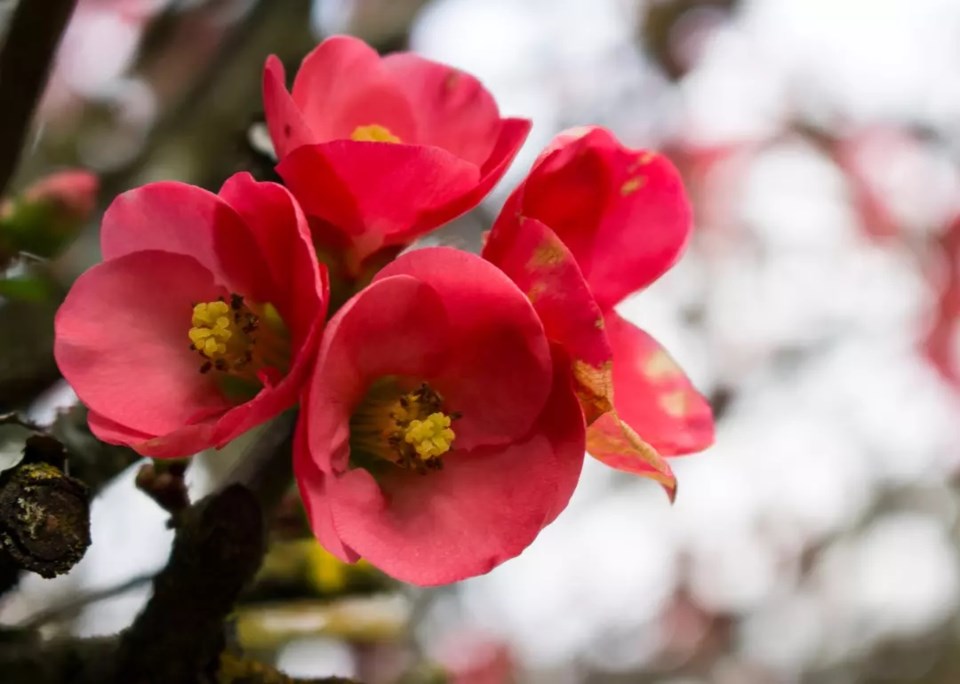Far from being a time when plants are dying and nonexistent, many flowers thrive in wintertime. More than a few exhibit their best colours during the cold months, producing fruits and leaves that are used in an array of medicines, foods, and ceremonies.
Shriveling leaves and snow-covered ground may give the appearance that winter has detrimental effects on plants—especially those that are strongly associated with the onset of spring. However, in facilitating blooms. Many flowers are formed during winter the year before they bloom when their buds use the dormant season to cultivate petals internally. Many other flowers require exposure to cold or shorter day lengths to bloom. The warmth of spring triggers them to unfold and reveal the full flowers that have been forming inside. As climate change causes shorter and milder winters, the . This causes spring flowers to bloom earlier and shortens the lifespans of many overwintering species.
Stacker consulted the to curate a gallery of 50 unique flowers that bloom in winter. All the plants on this list bloom in at least one of the following months: November, December, and January. The plants are organized alphabetically by scientific name. Many are native to warm climates and have spread to more temperate parts of the U.S., particularly the Gulf Coast and Southwest. Plants marked as "seasonal bloomer" and "flowers freely" will bloom in multiple seasons, and the plants with these classifications on this list are categorized as "winter hardy" by the Missouri Botanical Garden.
Read on to discover flower species that bloom in the winter and where they can be found. Each slide also lists the physical, medicinal, and cultural characteristics that make them unique.
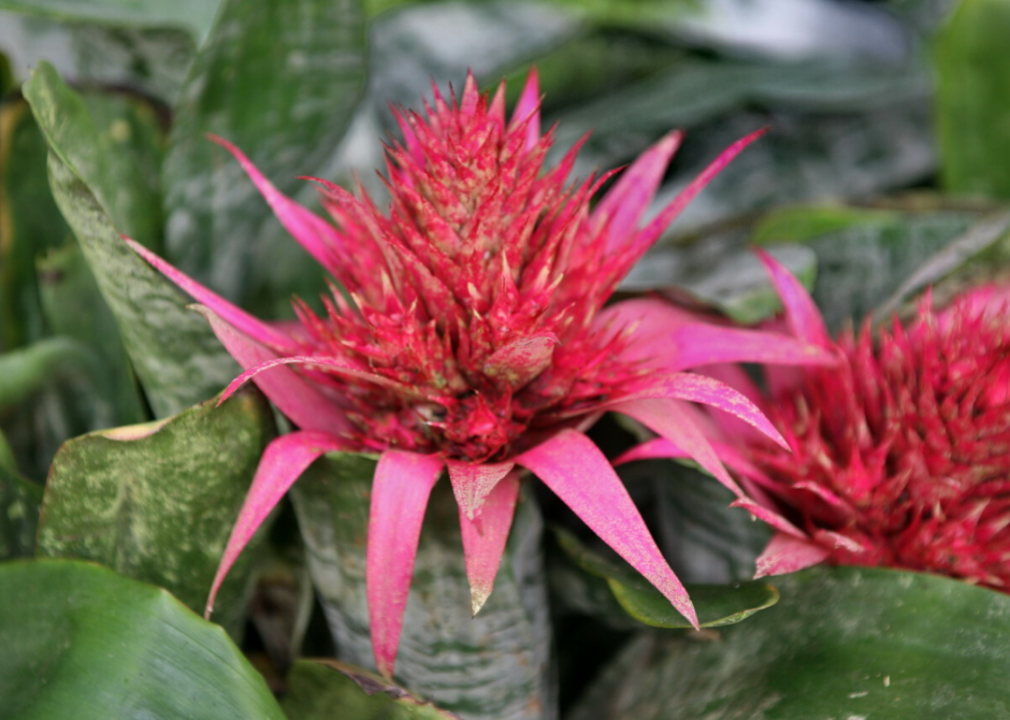
Cliff // Flickr
Urn plant
- Scientific name: Aechmea fasciata
- Bloom period: Seasonal bloomer
Native to southeastern Brazil, can be purchased across the U.S. as a flowering houseplant. Though it dies after blooming just once, showing off a pyramid-shaped cluster of purple flowers surrounded by bright pink bracts.
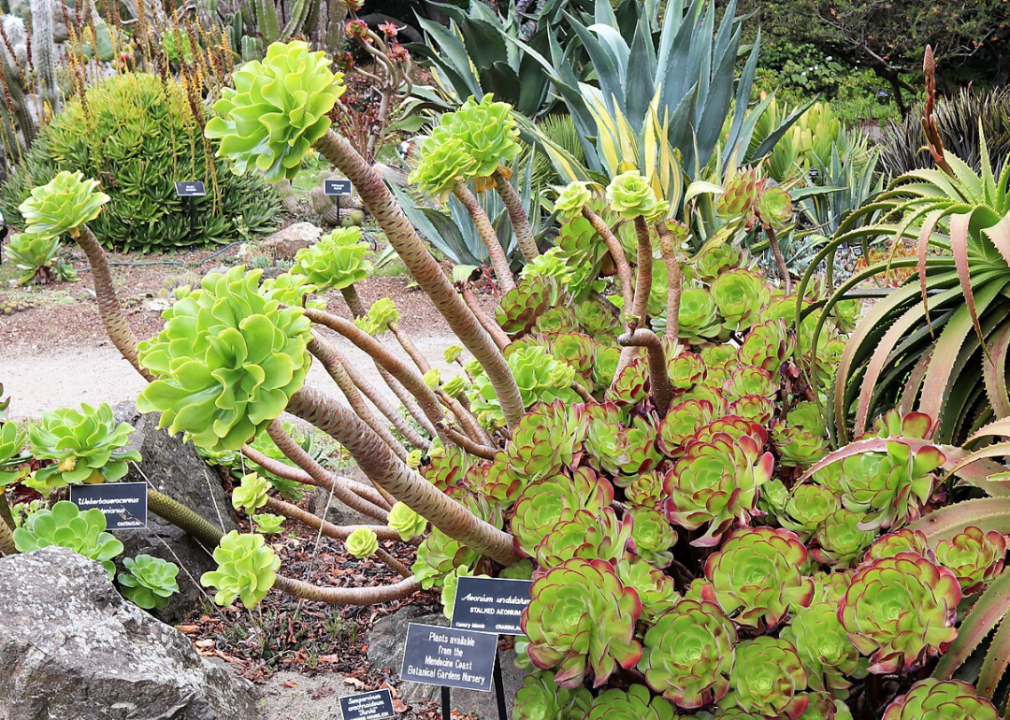
Don McCulley // Wikimedia Commons
Stalked aeonium
- Scientific name: Aeonium undulatum
- Bloom period: Seasonal bloomer
The stalked aeonium is a welcome addition to many succulent or cactus collections and can be . It is originally native to the Canary Islands.
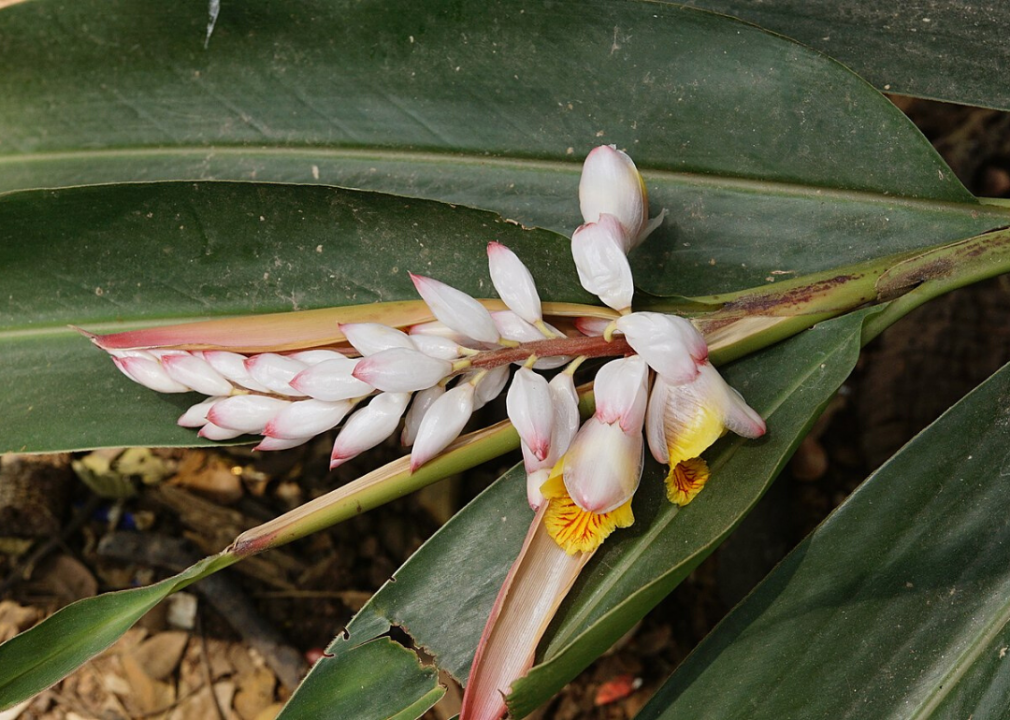
Vengolis // Wikimedia Commons
Siamese ginger
- Scientific name: Alpinia galanga
- Bloom period: Seasonal bloomer
The Siamese ginger is native to Southeast Asia. It is frequently used in cooking, particularly in Thai, Malaysian, Singaporean, and Indonesian food. It is , thin-sliced, and pounded into a paste. They are also dried up and made into a powder to be used as a flavouring in soups and curries.
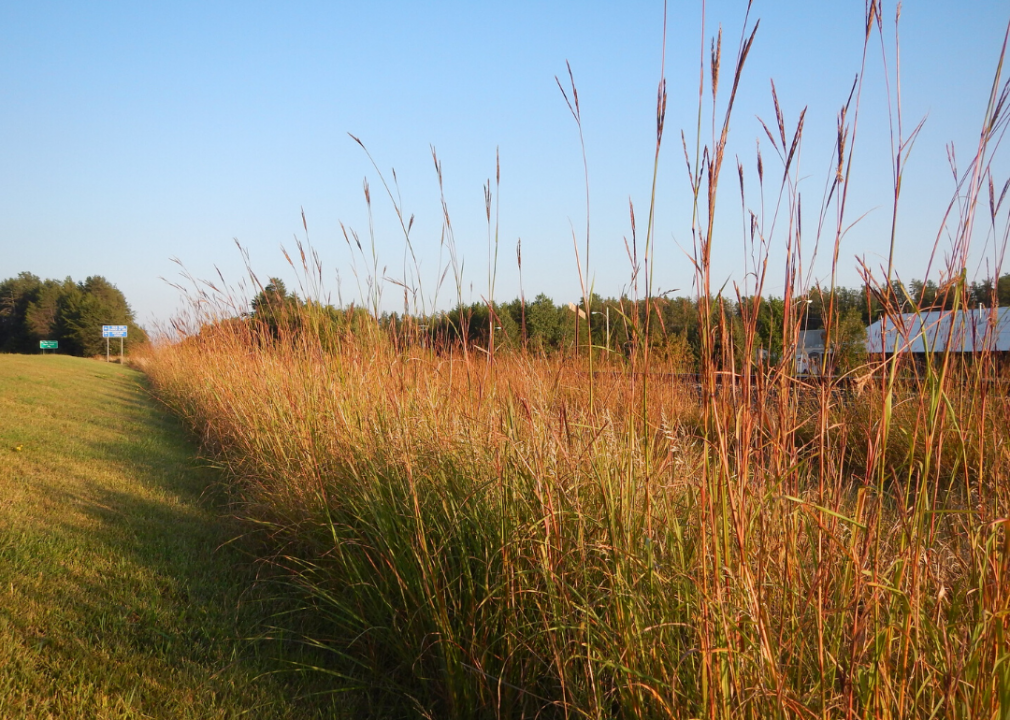
Matt Lavin // Flickr
Beard grass
- Scientific name: Andropogon gerardii
- Bloom period: September to February
Beard grass, true to its name, once spread across the Midwest from Canada to Mexico. Native to Missouri, , lending itself as a frequent accent to many wildflower gardens.
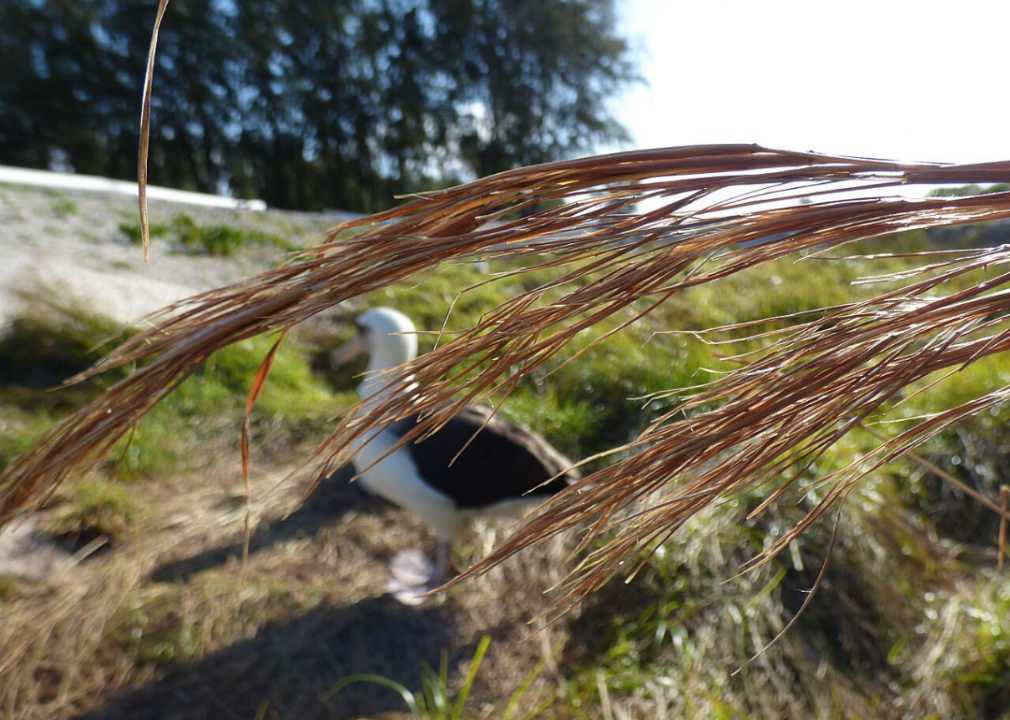
Forest and Kim Starr // Wikimedia Commons
Bushy bluestem
- Scientific name: Andropogon glomeratus
- Bloom period: September to February
The bushy bluestem prefers moist environments in the eastern and southern states, popping up near marshes or swamps. Its striking colouring makes it an attractive addition to many gardens .
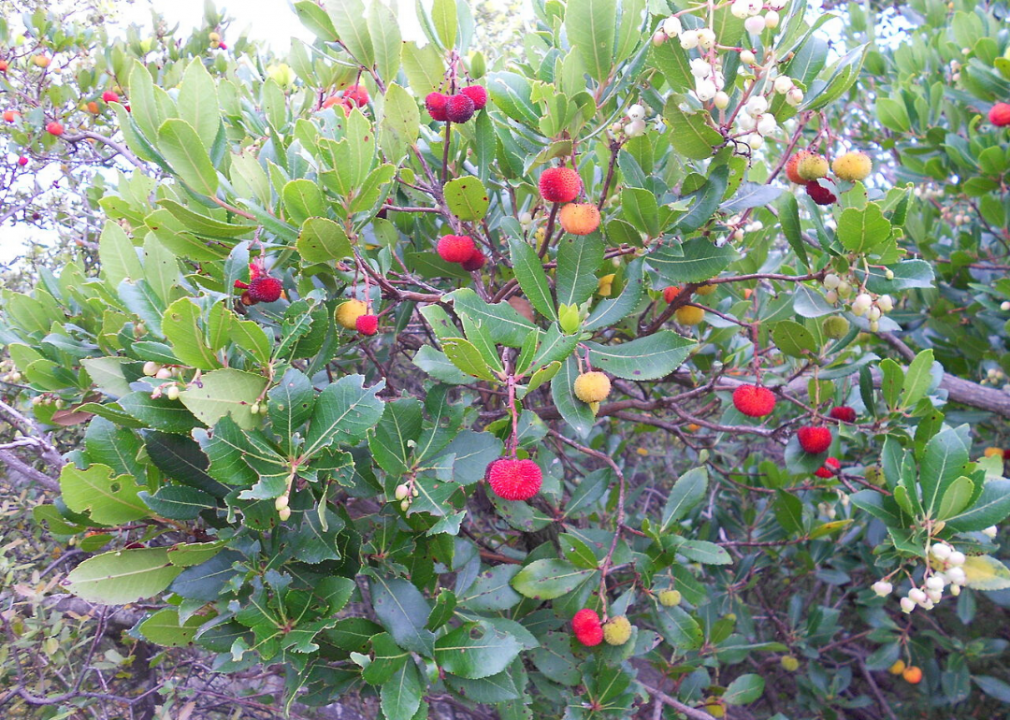
Andreas Theodorakatos
Strawberry tree
- Scientific name: Arbutus unedo
- Bloom period: October to December
Despite outward appearances, few would want to eat the strawberry tree’s fruit, which has a similar colour to actual strawberries. They are edible but What the tree’s fruit lacks in taste, its flowers make up for in colour and scent.
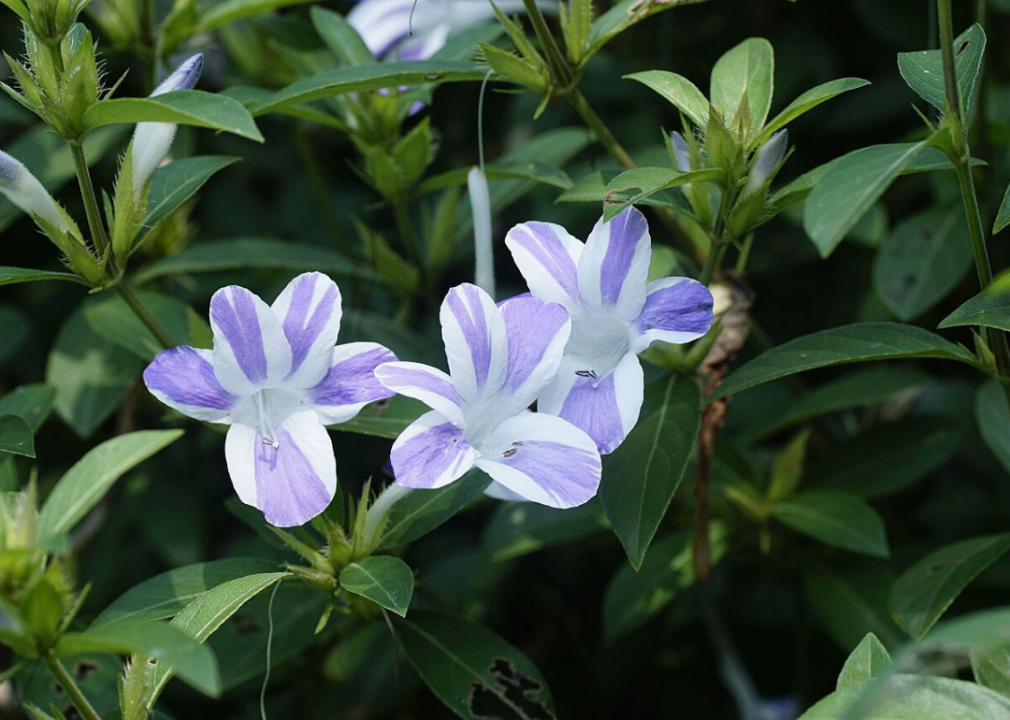
Vengolis // Wikimedia Commons
Philippine violet
- Scientific name: Barleria cristata
- Bloom period: September to December
The Philippine violet originally grew in a stretch from India to Myanmar to southern China, but in parts of Florida, Louisiana, Texas, Arizona, and California. Many will include it as an eye-catching addition to their gardens. The plant produces pink and purple flowers with distinctive white stripes.
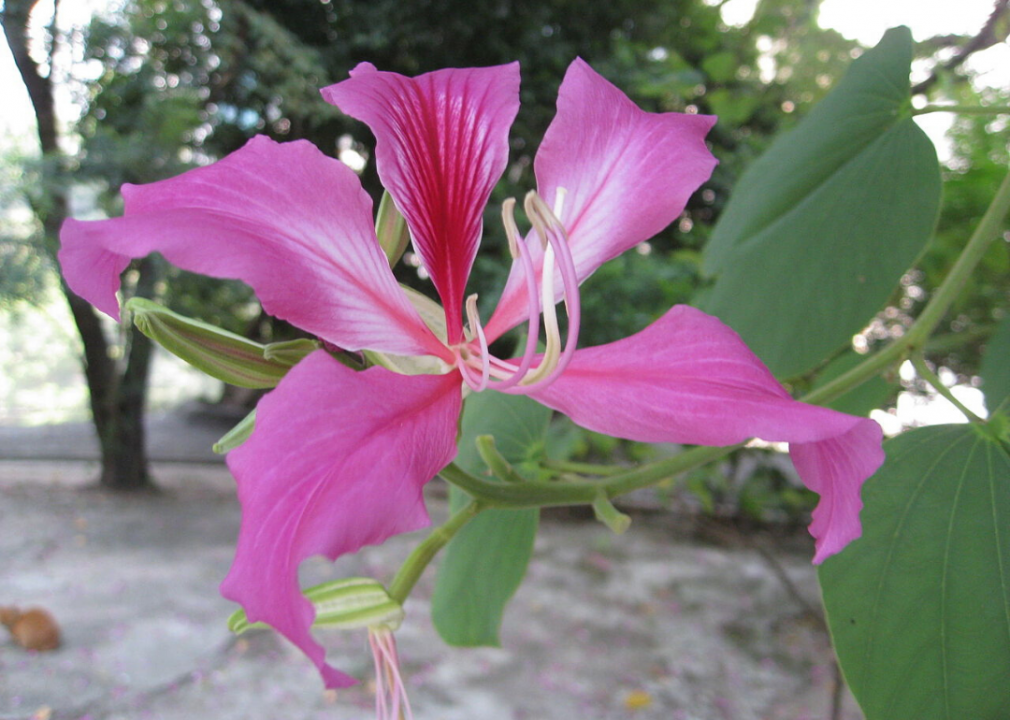
Man-wah Leung // Wikimedia Commons
Hong Kong orchid tree
- Scientific name: Bauhinia × blakeana
- Bloom period: November to April
The Hong Kong orchid tree is often planted for ornamental use, with many collecting its flowers for display in vases and other arrangements, as it is Often grown in warm U.S. climates, including Hawaii, California, Arizona, Florida, and Texas, it is native to China.
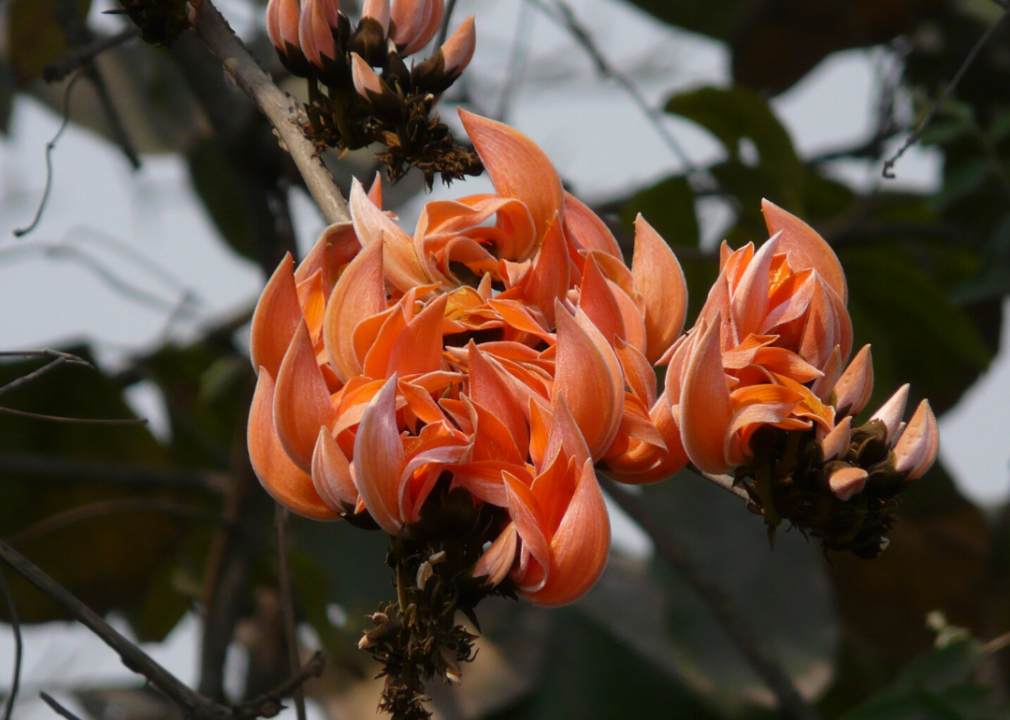
Dinesh Valke // Flickr
Flame of the forest
- Scientific name: Butea monosperma
- Bloom period: January to March
The flame of the forest requires a specific habitat to thrive. Its originally found in humid forests in parts of India and Sri Lanka. The seeds, leaves, gum, and flowers offer therapeutic benefits, and they are .
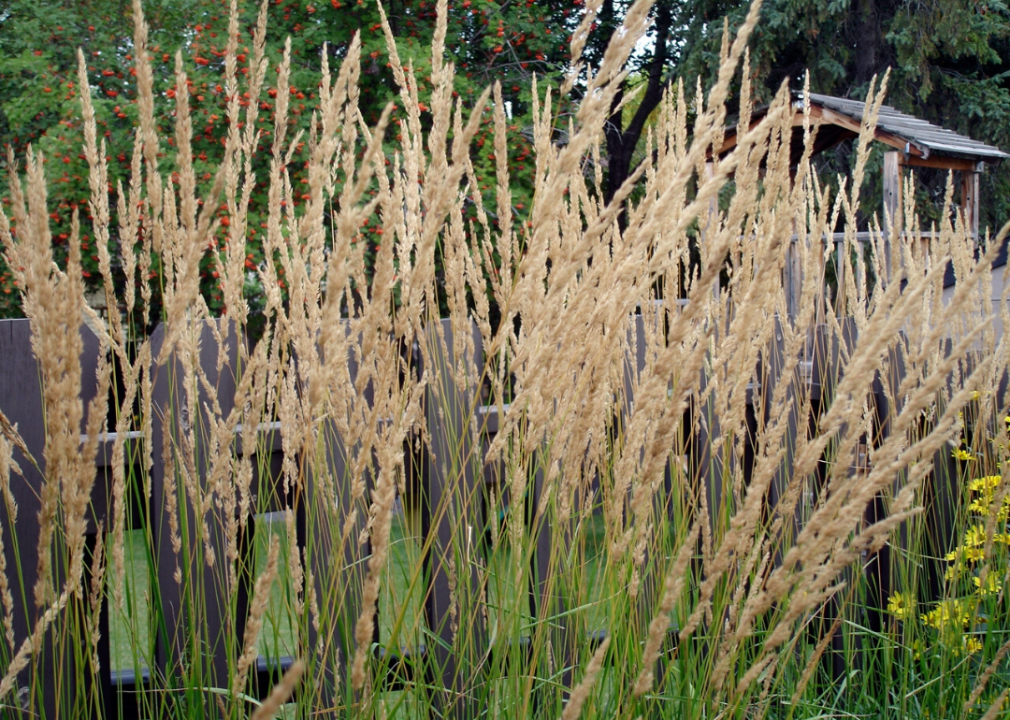
Daryl Mitchell // Wikimedia Commons
Feather reed grass
- Scientific name: Calamagrostis × acutiflora
- Bloom period: June to February
Credit the mathematical-looking scientific name of feather reed grass to its origin. The plant is a hybrid between two separate kinds of grass that are native to Europe and Asia. At times, the hybrid occurs naturally in Europe. When offered moist, lightly shaded areas to grow in, .
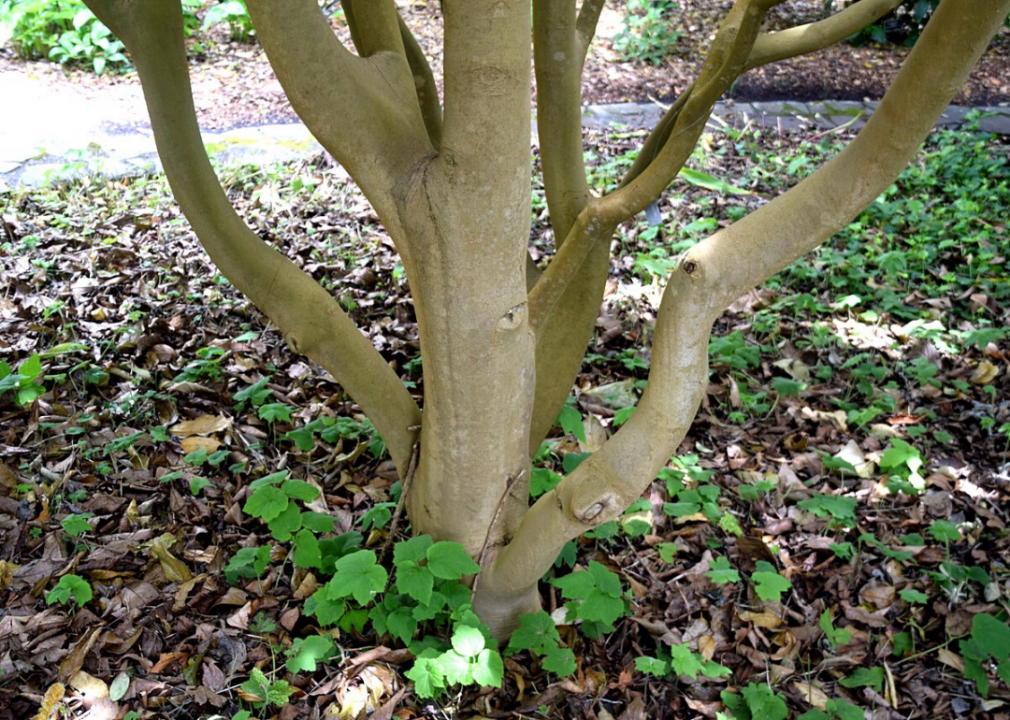
Krzysztof Golik // Wikimedia Commons
Camellia (C. crapnelliana)
- Scientific name: Camellia crapnelliana
- Bloom period: October to December
Native to southeast China, the camellia tree is , blooming in gardens and woodlands during the winter. Unfortunately, the species is frequently victim to multiple diseases, including anthracnose, black mold, and petal blight.

BS Thurner Hof // Wikimedia Commons
Camellia (C. furfuracea)
- Scientific name: Camellia furfuracea
- Bloom period: December to March
Like camellia crapnelliana, camellia furfuracea is a winter-strong evergreen originally from Southeast Asia. They can be found in China, Vietnam, and Laos. Furfuracea .
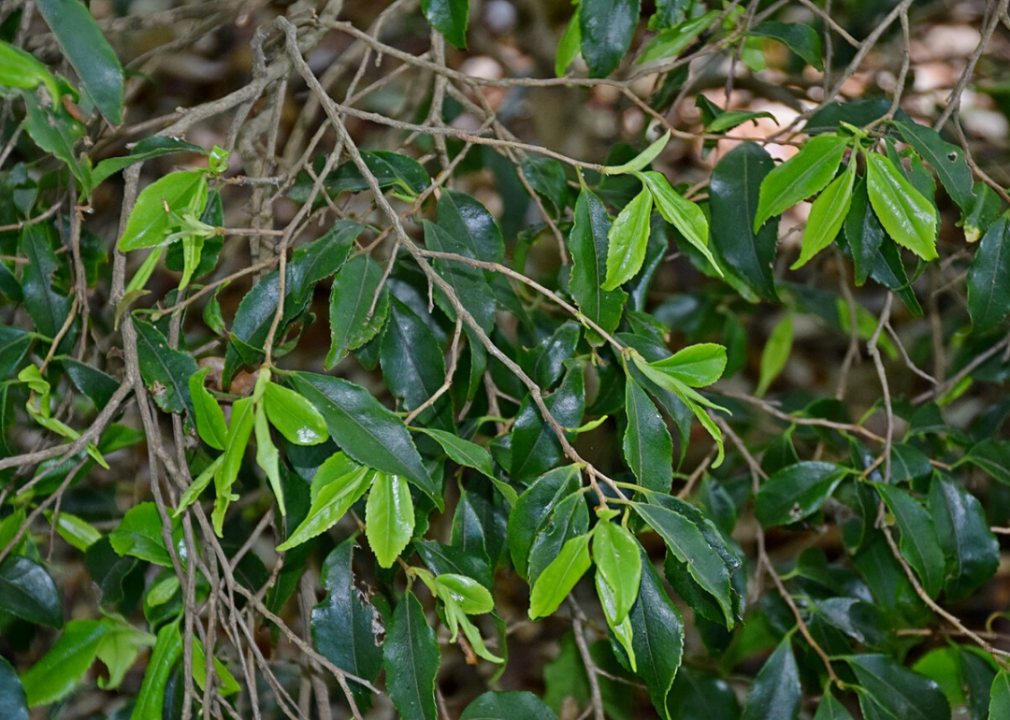
Krzysztof Golik // Wikimedia Commons
Camellia (C. rosiflora)
- Scientific name: Camellia rosiflora
- Bloom period: December to March
When China-born camellia rosiflora evades leaf spots, viruses, canker, and root rot, it can be spotted throughout the winter. It is often around lawns, houses, and gardens.
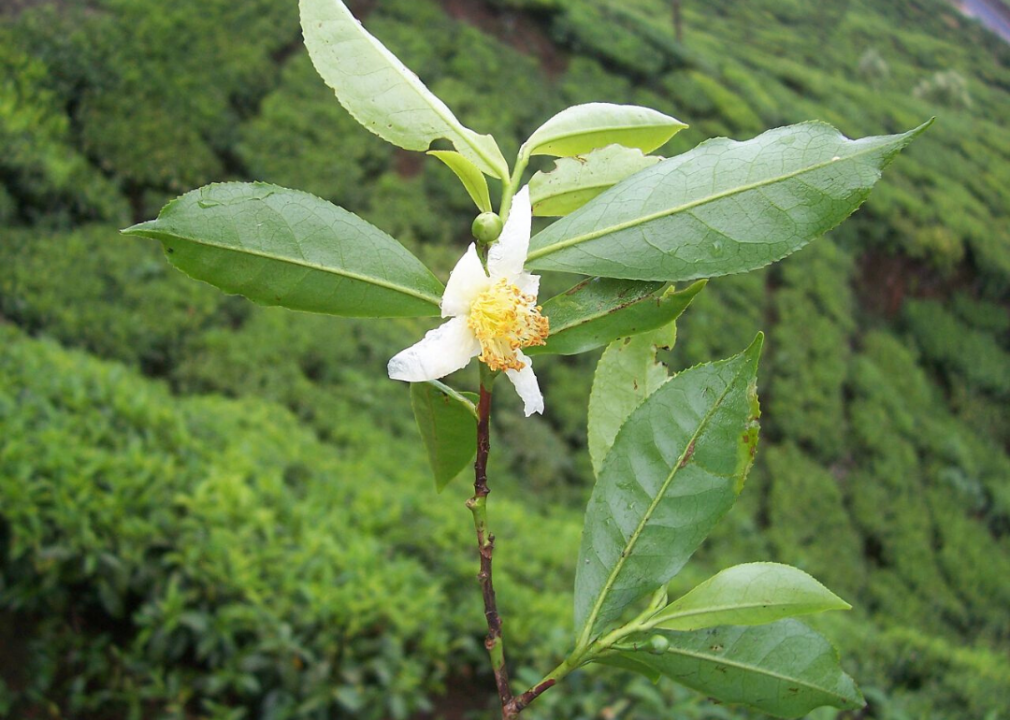
Paul Munhoven // Wikimedia Commons
Tea tree
- Scientific name: Camellia sinensis
- Bloom period: October to December
The fourth of the camellia species to be used as a winter-hearty shrub, this evergreen uniquely offers additional commercial value as well. It is , and its leaves are used to make tea.
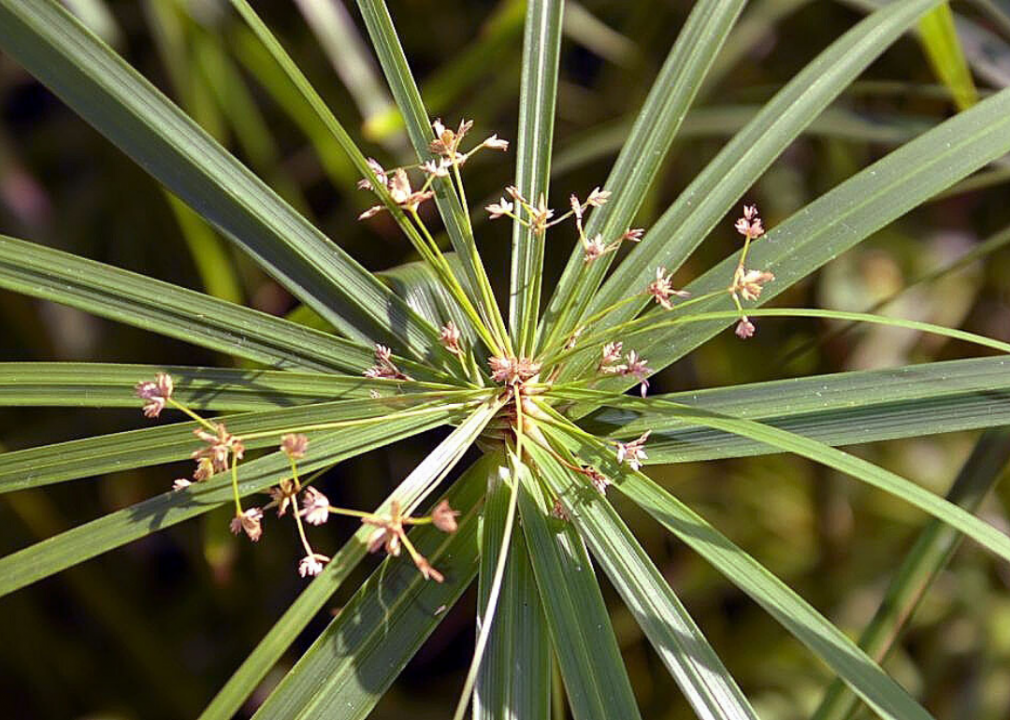
David J. Stang // Wikimedia Commons
Umbrella plant
- Scientific name: Cyperus involucratus 'Gracilis'
- Bloom period: Seasonal bloomer
The umbrella plant had steadily spread beyond its origins. It was first introduced to the South before it “escaped gardens and naturalized” in a stretch from Florida to Hawaii. Its persistent growth has become a problem, as .
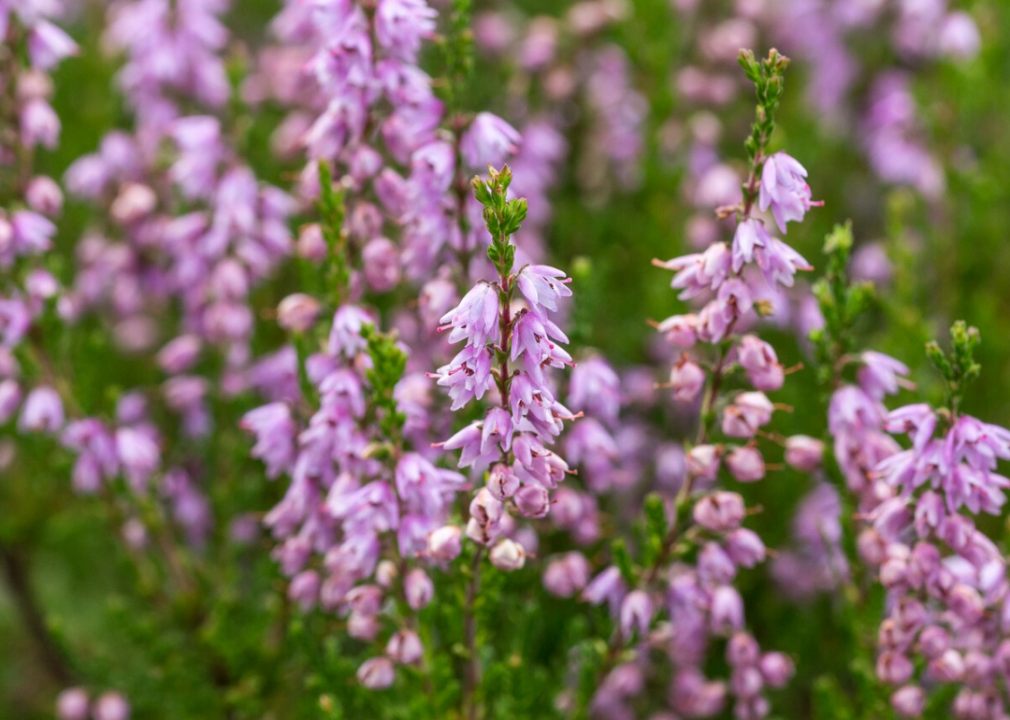
Needpix.com
Winter heath
- Scientific name: Erica carnea 'Springwood Pink'
- Bloom period: January to March
Native to the European Alps, the winter heath is particularly sturdy. It's able to grow on slopes and among rocks. When given time, the species can form and is used in some rock gardens.
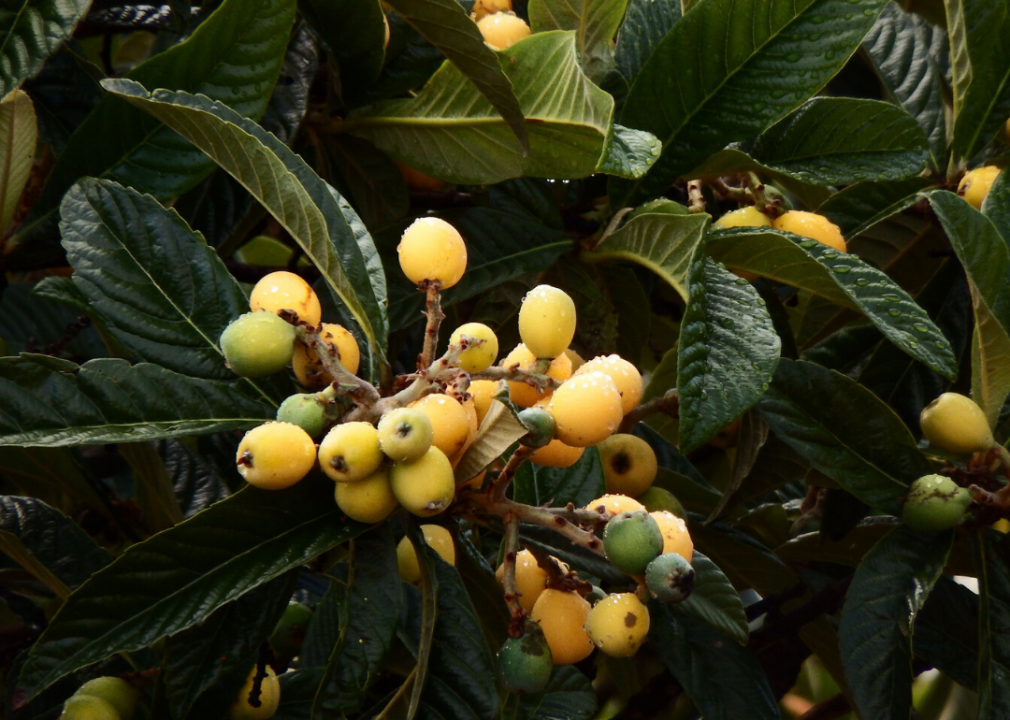
Pixabay
Japanese loquat
- Scientific name: Eriobotrya japonica
- Bloom period: November to December
The Japanese loquat produces a juicy, yellow-orange fruit by spring. It is used . Native to China and , it is often grown commercially, as well as ornamentally.
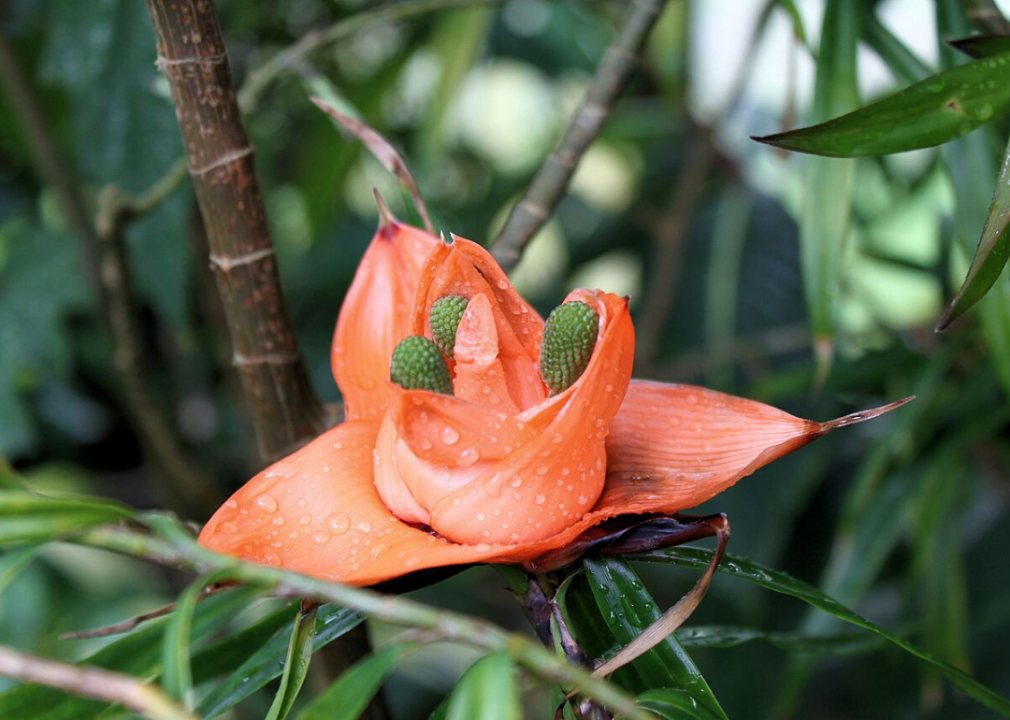
Zinnmann // Wikimedia Commons
Freycinetia
- Scientific name: Freycinetia cumingiana
- Bloom period: Seasonal bloomer
The freycinetia is found in the Philippines and Hawaii. They are often shipped to the rest of the U.S. for sale in flower shops. Male flowers are considered more attractive than females, and it is
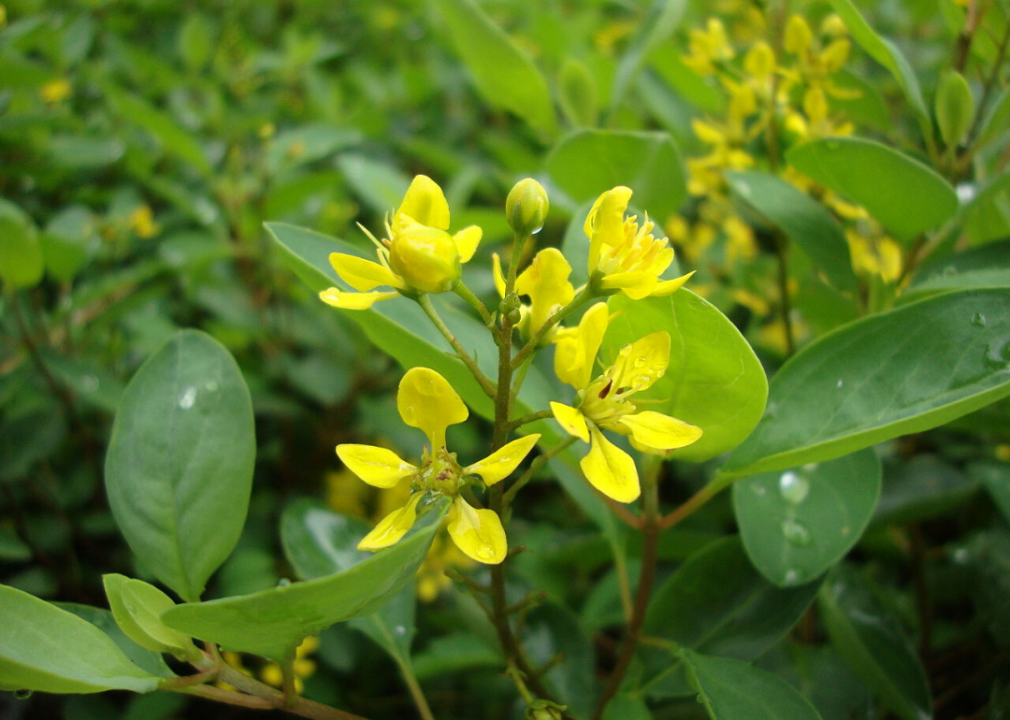
Prenn // Wikimedia Commons
Slender goldshower
- Scientific name: Galphimia gracilis
- Bloom period: Flowers freely
The slender goldshower is most commonly used for personal gardens, and they are . It is native to Central and South America.

Wendy Cutler // Flickr
Tassel brush
- Scientific name: Garrya × issaquahensis
- Bloom period: December to February
Tassel brush, whose origins are along the U.S. Pacific coastline, cannot grow naturally in the wild, and it . It's popularly used in winter gardens and within pruned hedges.

David J. Stang // Wikimedia Commons
Lignum vitae
- Scientific name: Guajacum sanctum
- Bloom period: Seasonal bloomer
The wood of the lignum vitae is It was used in steamship propellers, mallets, and gears, and it is almost impossible to drive a nail through. The tree is native to Florida, Mexico, and the Caribbean. Today, it's listed as endangered on IUCN’s Red List, primarily due to habitat loss.
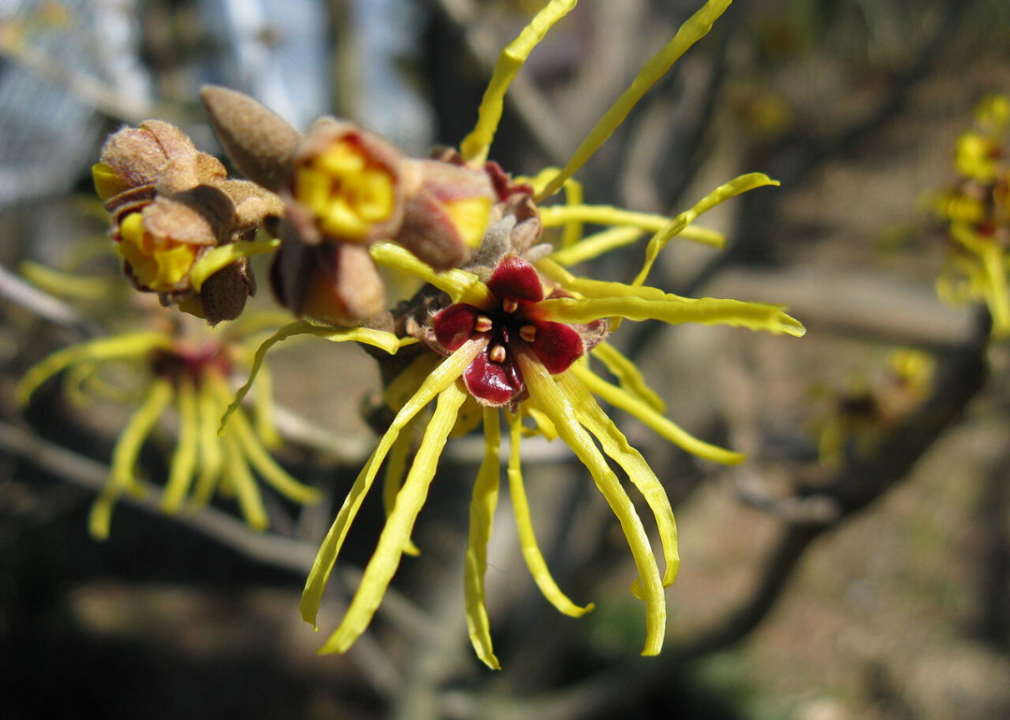
KENPEI // Wikimedia Commons
Japanese witch hazel
- Scientific name: Hamamelis japonica
- Bloom period: January to March
Though noted for its green summer colouring, the Japanese witch hazel is equally admired for its yellow, purple, and red colours in the fall, . Its variety of tones and fragrances make it a common addition to home gardens. It is native to the mountains of Japan.
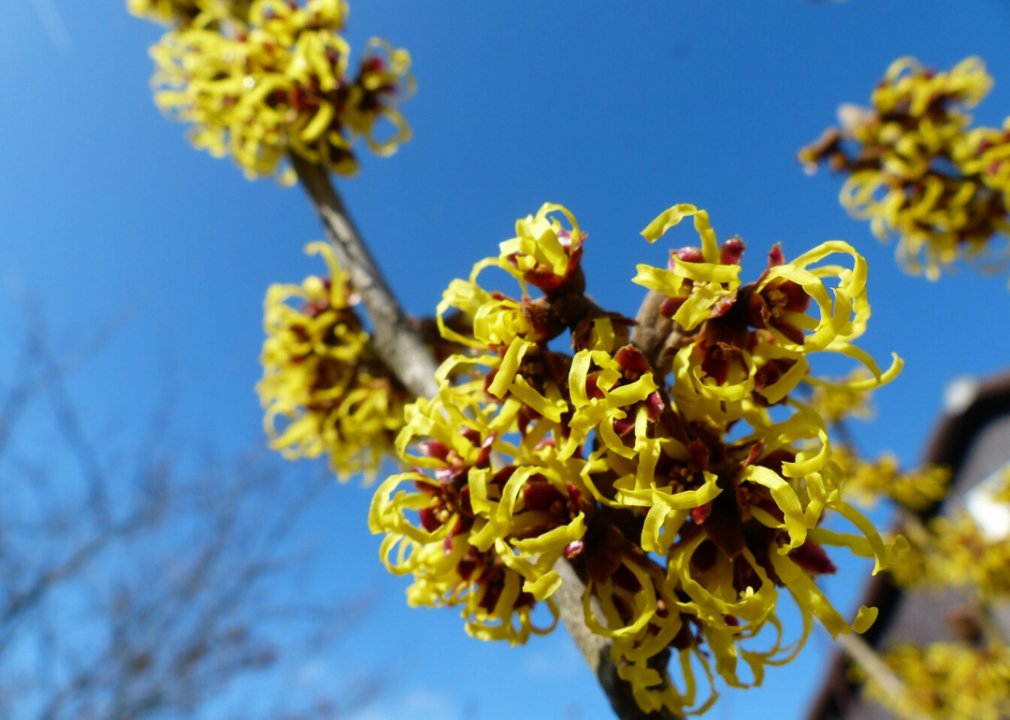
Pixabay
Chinese witch hazel
- Scientific name: Hamamelis mollis
- Bloom period: January to March
Unfortunately for the Japanese witch hazel, the Chinese witch hazel As such, it is frequently used in gardens and bouquets.

Needpix.com
Ozark witch hazel
- Scientific name: Hamamelis vernalis
- Bloom period: January to April
The Ozark witch hazel derives its name from its native range—the Ozark Plateau, which encompasses parts of Missouri, Arkansas, and Oklahoma. With its generally tall height and winter durability, it is often .
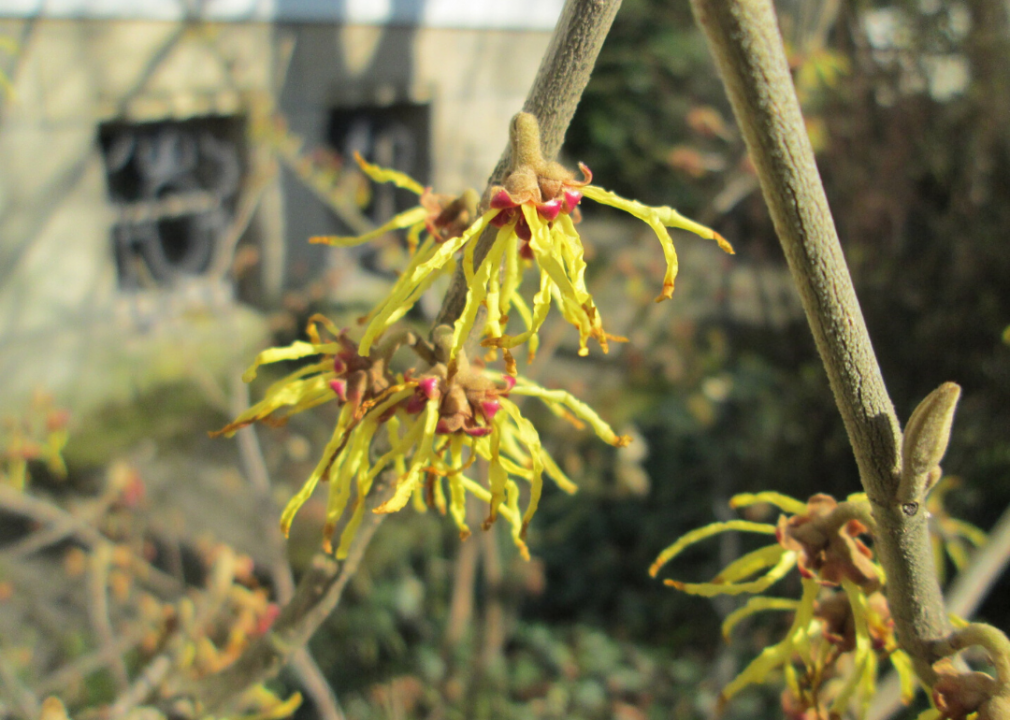
Andreas Rockstein // Flickr
Common witch hazel
- Scientific name: Hamamelis virginiana
- Bloom period: October to December
The common witch hazel’s scientific name and the plant can be found in and around forests in the eastern parts of the U.S. It is commonly used in woodland gardens and to border properties.
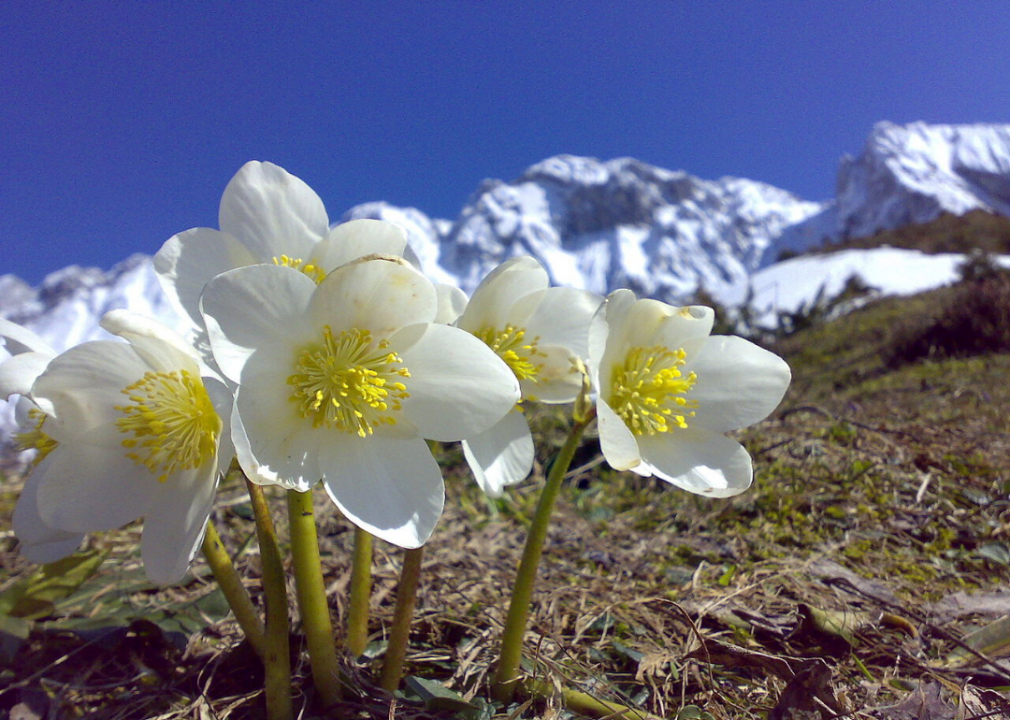
Robert Hundsdorfer // Wikimedia Commons
Christmas rose
- Scientific name: Helleborus niger 'Altifolius'
- Bloom period: December to March
This striking plant produces large white flowers that look like roses. Requiring at least some shade to thrive, it is .
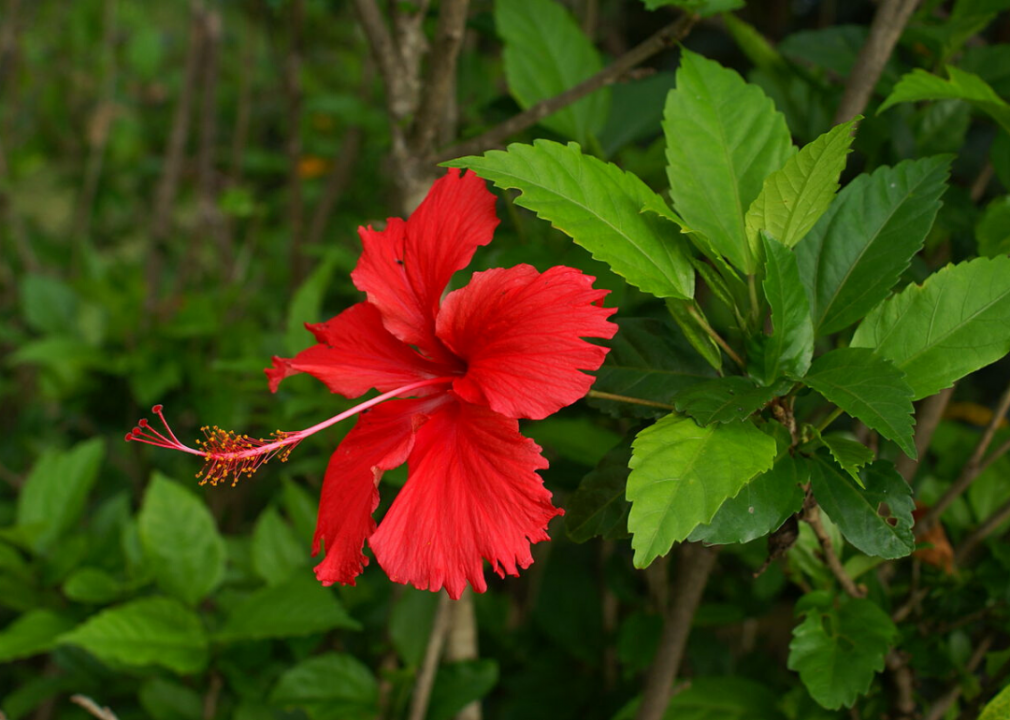
B.navez // Wikimedia Commons
Chinese hibiscus
- Scientific name: Hibiscus rosa-sinensis
- Bloom period: Seasonal bloomer
Originally found in tropical areas across Asia, the Chinese hibiscus blooms that are half a foot wide. They make great houseplants, but they require steady sunlight to grow.
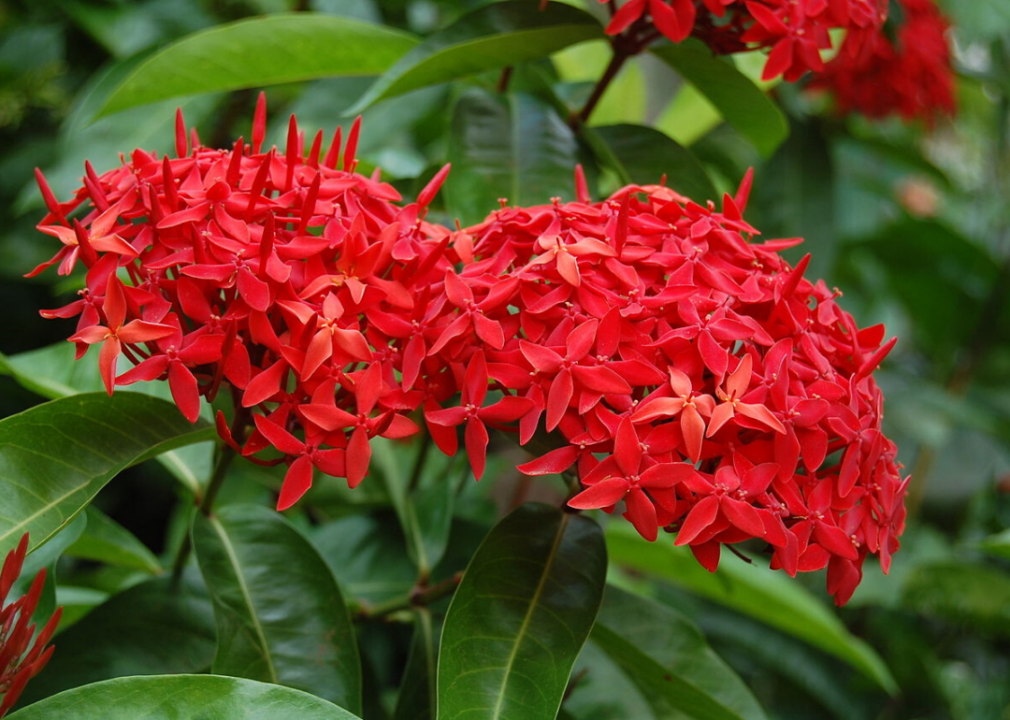
Meneerke bloem // Wikimedia Commons
Flame of the woods
- Scientific name: Ixora casei
- Bloom period: Flowers freely
Native to Micronesia, the flame of the woods is now widely found in tropical areas across the globe. Depending on the location, which will dictate whether it can be used as an indoor houseplant or outside garden addition.
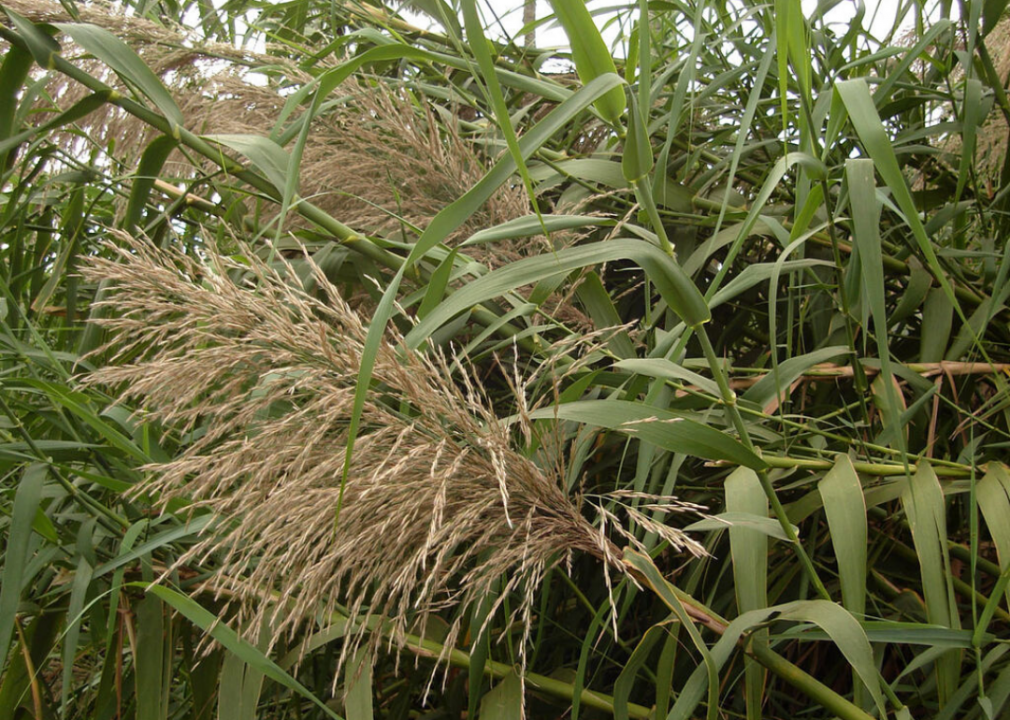
Tauʻolunga // Wikimedia Commons
Pacific Island silvergrass
- Scientific name: Miscanthus floridulus
- Bloom period: August to February
The Pacific Island silvergrass is . The plant has tough, prominent foliage that grows in clumps of up to 8 feet tall. It is native to Japan, Taiwan, and Guam and can be used ornamentally. Within the U.S, miscanthus mealybug and miscanthus blight are wreaking detrimental effects on the grass’ growth and health.
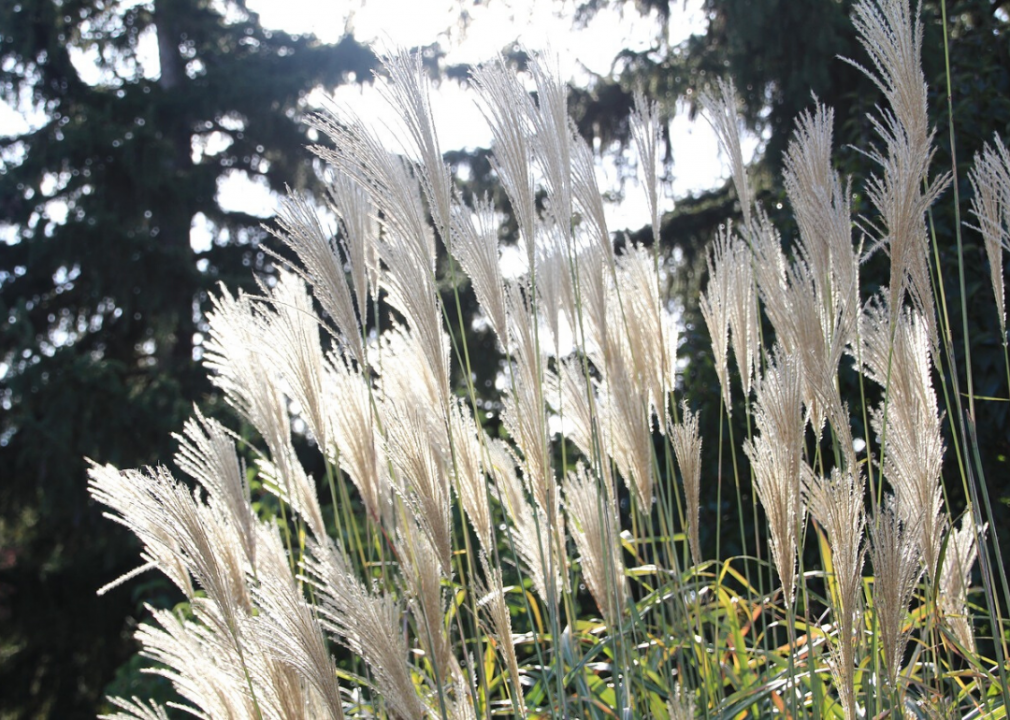
Needpix.com
Miscanthus
- Scientific name: Miscanthus oligostachyus
- Bloom period: August to February
Miscanthus oligostachyus is similar in appearance to miscanthus sinensis, its larger relative, and a fixture in gardens, ponds, and other landscaped areas. Like Pacific Island silvergrass, it is originally from Japan, and it is .
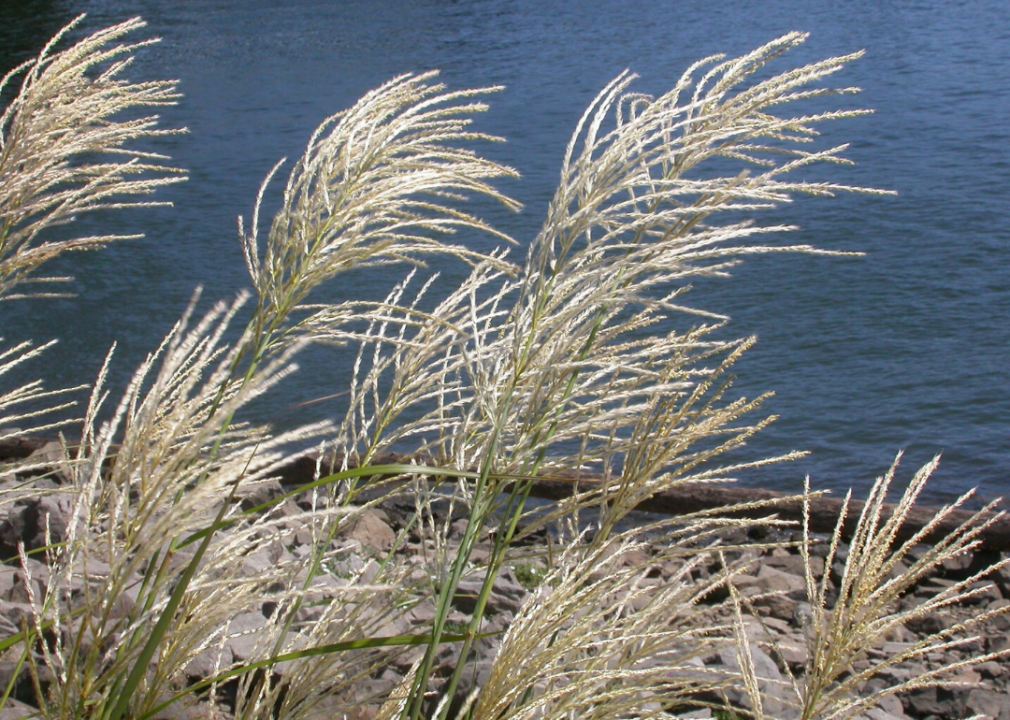
Matt Lavin // Flickr
Chinese silvergrass
- Scientific name: Miscanthus sinensis
- Bloom period: July to February
Chinese silvergrass has spread far past its origins in Japan, Korea, and China, naturalizing in over 25 states east of the Mississippi River. It can often be spotted along the sides of roads and railroads, .
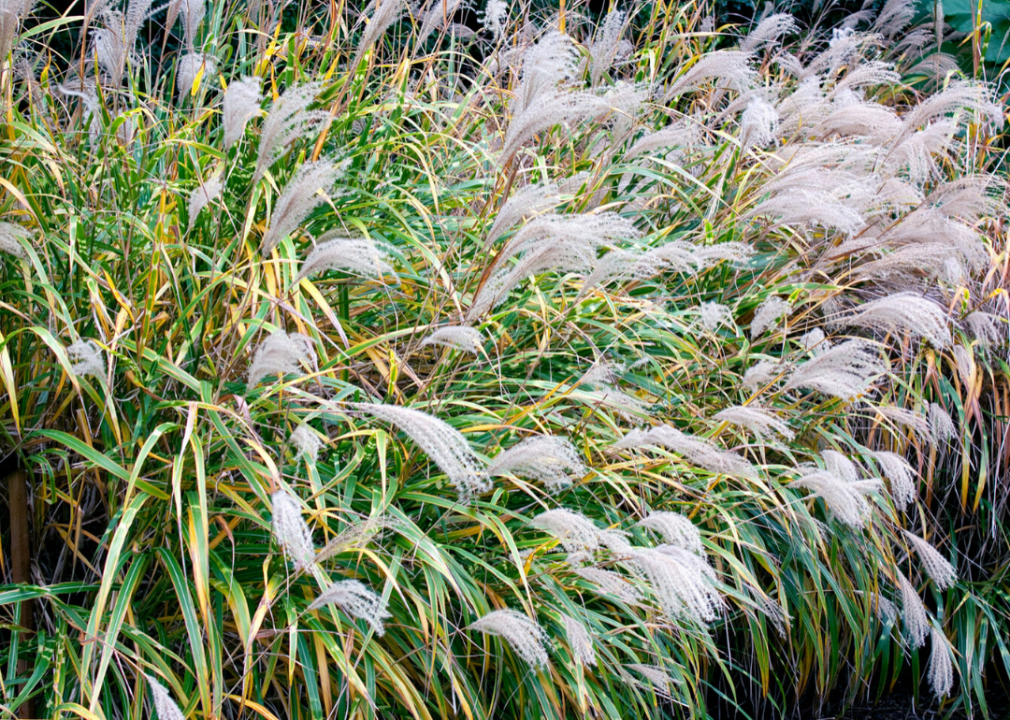
Rexness // Flickr
Zebra grass
- Scientific name: Miscanthus sinensis 'Zebrinus'
- Bloom period: August to February
Like Chinese silvergrass, zebra grass It is recognizable by the yellow stripes that stretch horizontally across its green leaves, and it is often used ornamentally in gardens or as dried flower specimens.
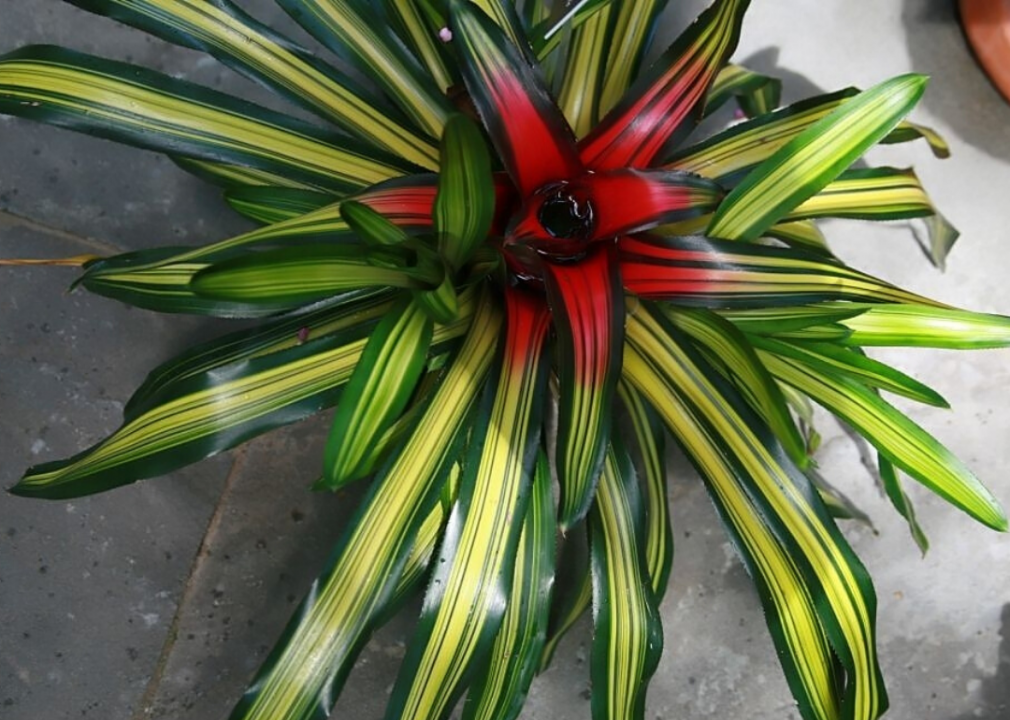
David J. Stang // Wikimedia Commons
Blushing bromeliad
- Scientific name: Neoregelia carolinae f. tricolour
- Bloom period: Seasonal bloomer
The blushing bromeliad . It's known as an epiphyte. Native to southeastern Brazil, it can be kept as a houseplant in humid areas and within well-drained soil.
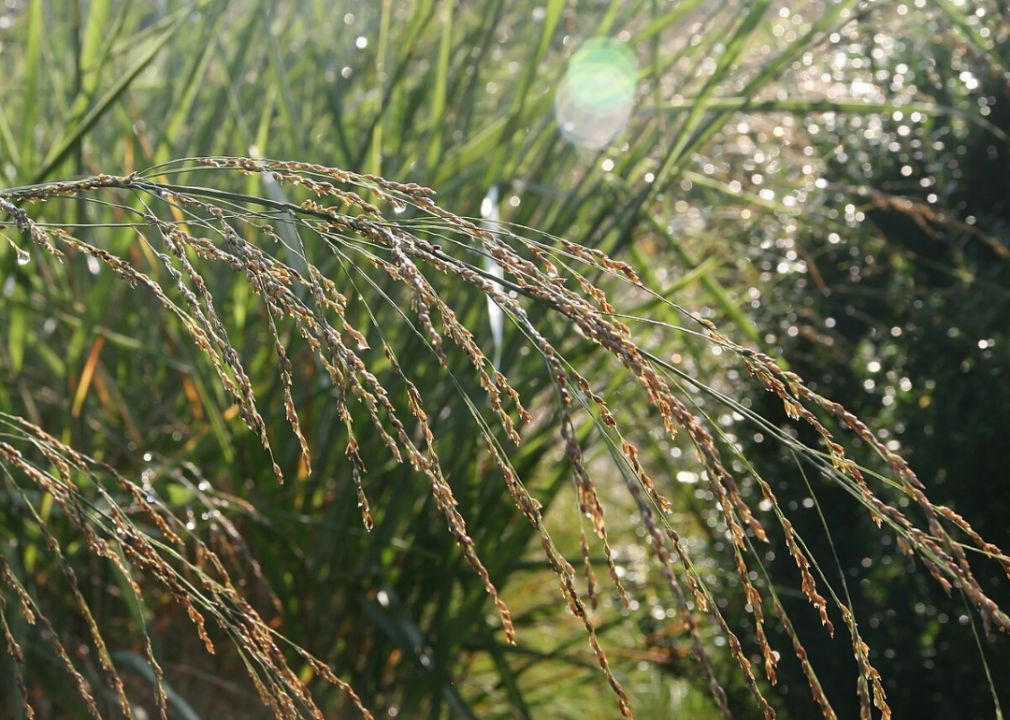
David J. Stang // Wikimedia Commons
Bitter switchgrass
- Scientific name: Panicum amarum 'Dewey Blue'
- Bloom period: September to February
Bitter switchgrass has been said to resemble a fountain, with blue flowers extending out of upright stems. It is .
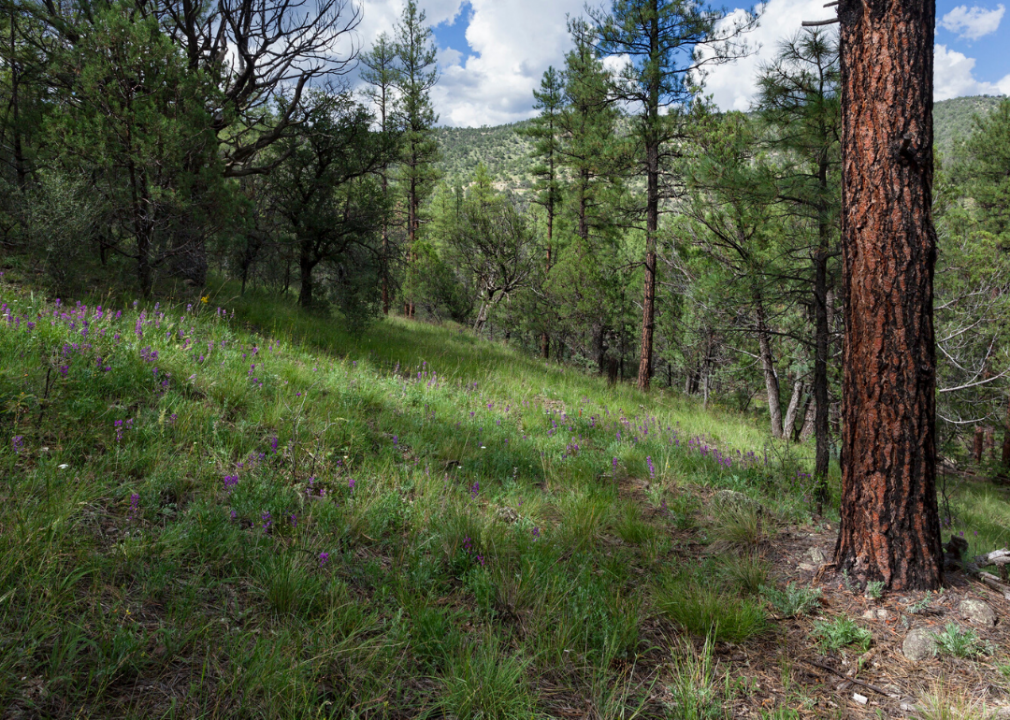
Patrick Alexander // Flickr
Panic grass
- Scientific name: Panicum bulbosum
- Bloom period: July to February
With grey-green foliage and red and brown flowers, panic grass is . It is native to a stretch of the U.S. from Arizona to New Mexico, with some appearances in Nevada, Texas, and Mexico.
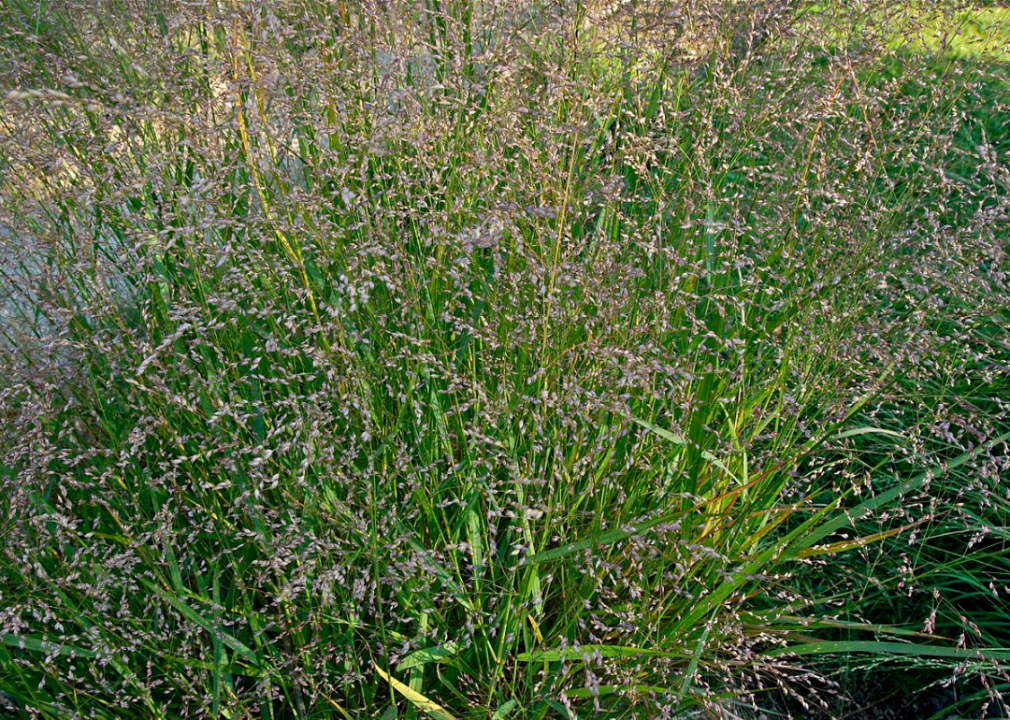
Jebulon
Switchgrass
- Scientific name: Panicum virgatum
- Bloom period: July to February
Before habitat destruction broke up formerly uninterrupted swaths of prairie in Missouri, switchgrass , standing tall and keeping its stiffness from summer through winter. Today, it is mostly used in wild gardens and found in prairies, meadows, and near ponds.
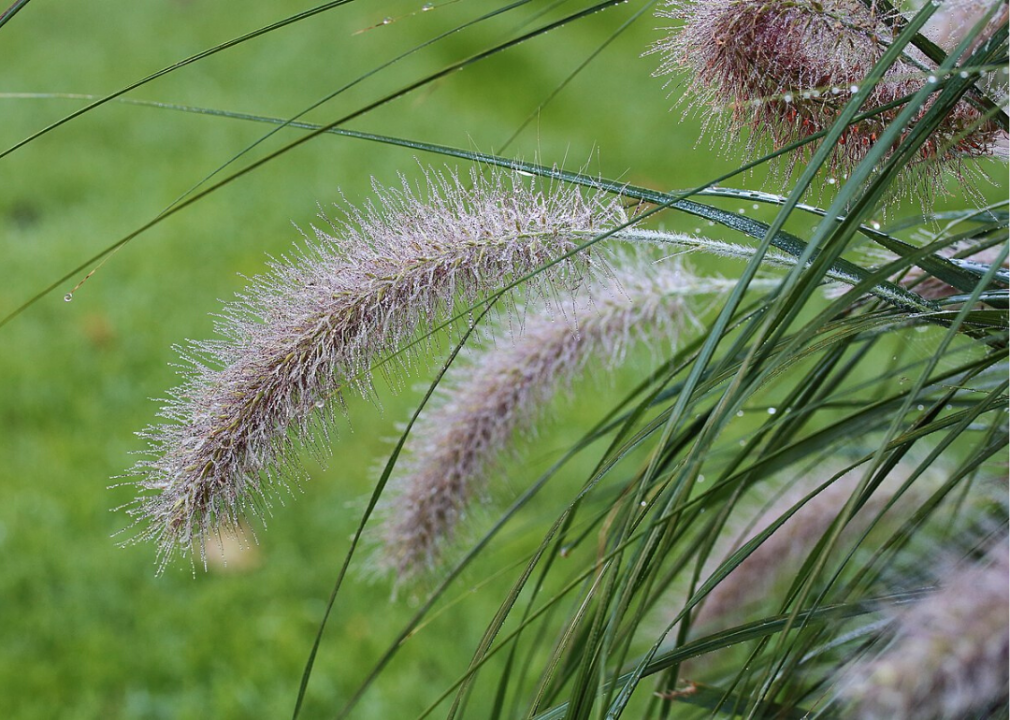
Dominicus Johannes Bergsma // Wikimedia Commons
Fountain grass
- Scientific name: Pennisetum alopecuroides
- Bloom period: July to February
In its native eastern Asia and western Australia, fountain grass is . It produces a variety of purple, pink, and white flowers and is used in many gardens.
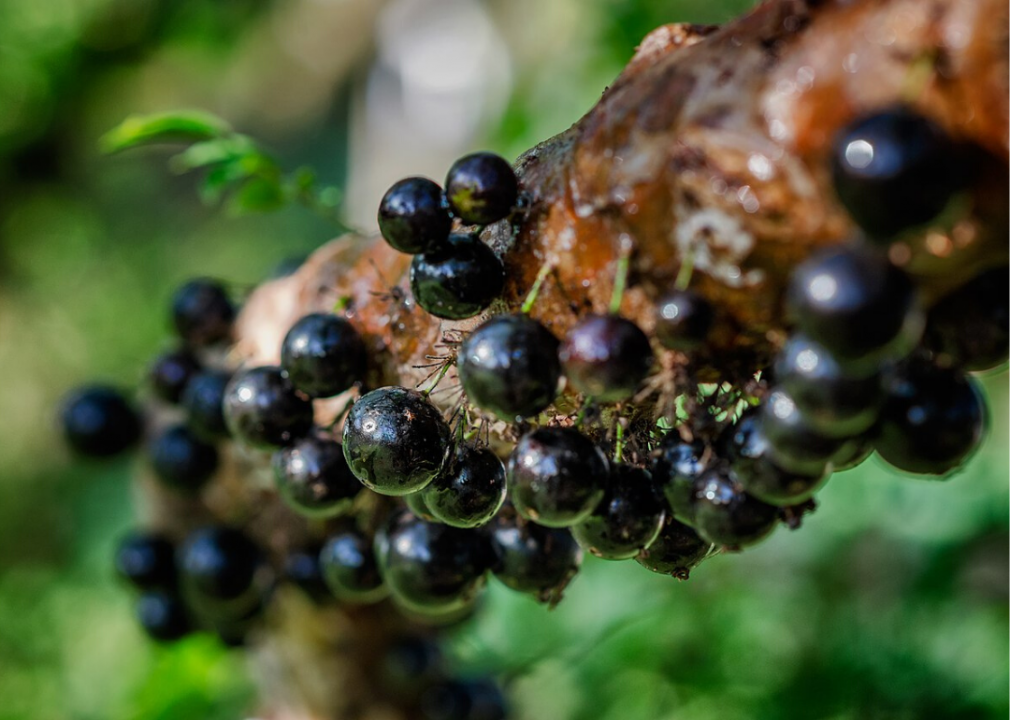
Bruno.karklis // Wikimedia Commons
Jaboticaba
- Scientific name: Plinia cauliflora
- Bloom period: Seasonal bloomer
The jaboticaba plant is . In its native southeastern Brazil, jaboticaba fruits are used to make jellies and wines.
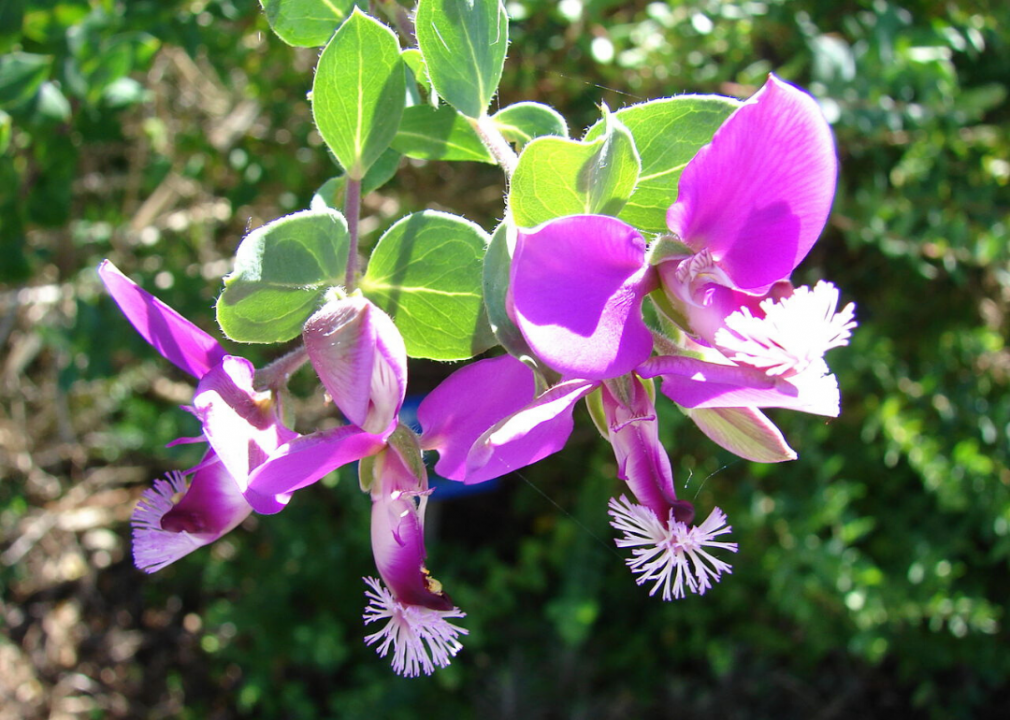
Forest & Kim Starr // Wikimedia Commmons
Sweet pea shrub
- Scientific name: Polygala × dalmaisiana
- Bloom period: Seasonal bloomer
The sweet pea shrub where it blooms pinkish-purple flowers year-round. These pretty products make the shrub popular in gardens, bouquets, and arrangements.
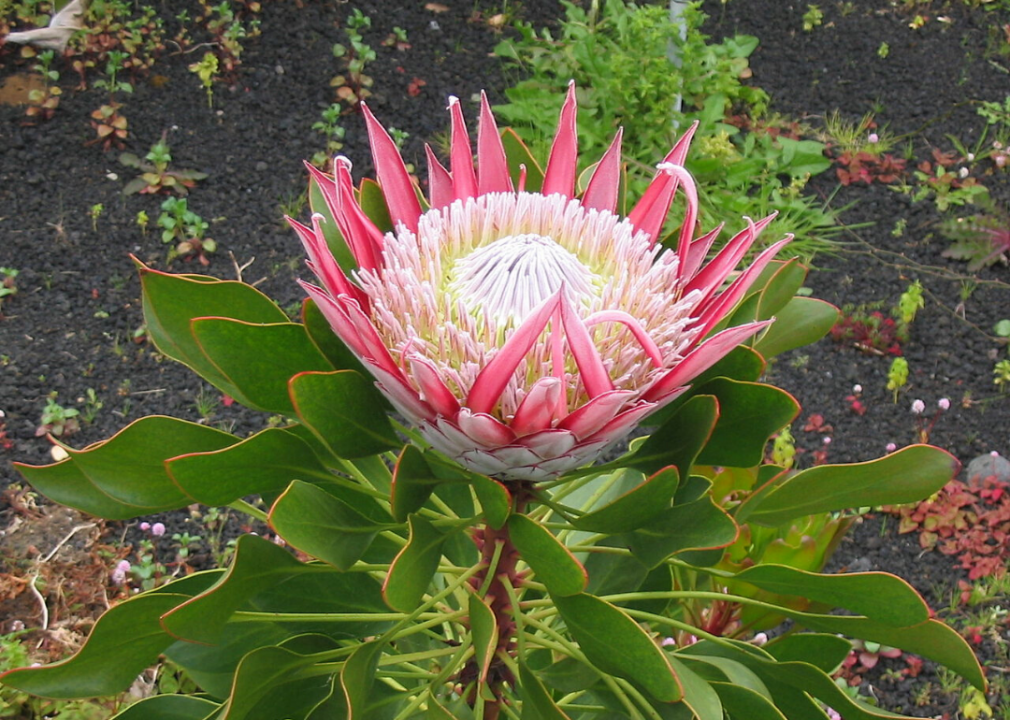
Ixitixel // Wikimedia Commons
King protea
- Scientific name: Protea cynaroides
- Bloom period: Seasonal bloomer
A regal name is required for . The king protea is admired and cultivated for the huge flowers it produces. Its flowers are red, pink, or white, and can grow up to 12 inches in diameter.
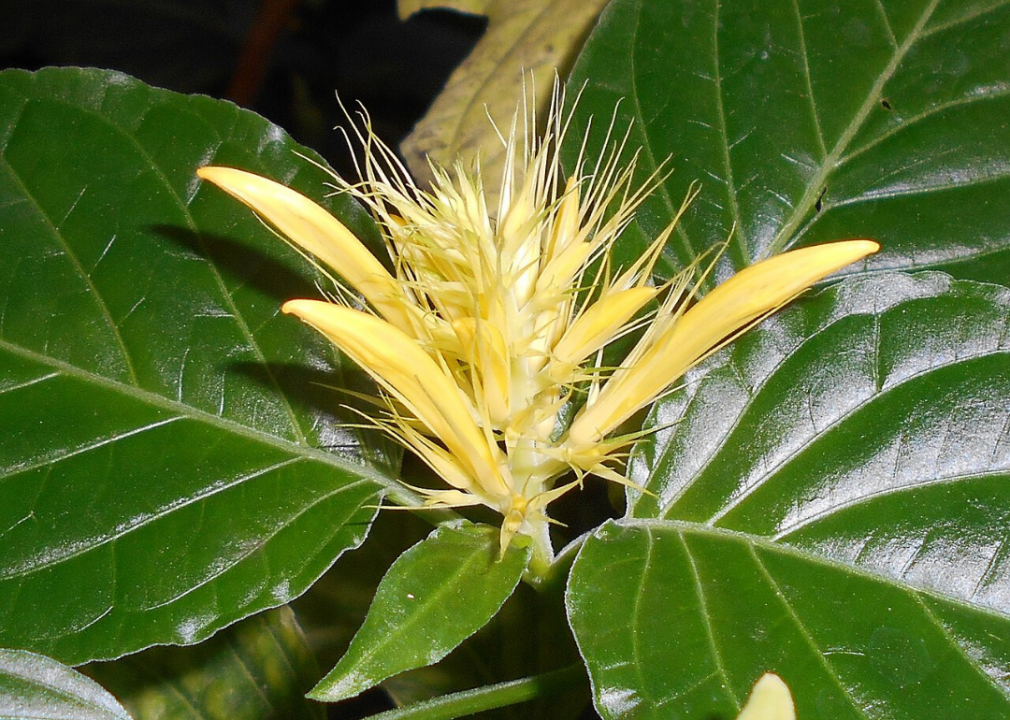
Salicyna // Wikimedia Commons
Schavleria
- Scientific name: Schaueria flavicoma
- Bloom period: Flowers freely
Those who appreciate the yellow, tube-shaped flowers of the schavleria can grow the plant outside of its native Brazil but must take care to do so gently. The ornamental species as long as humidity, shelter, and shade are provided.
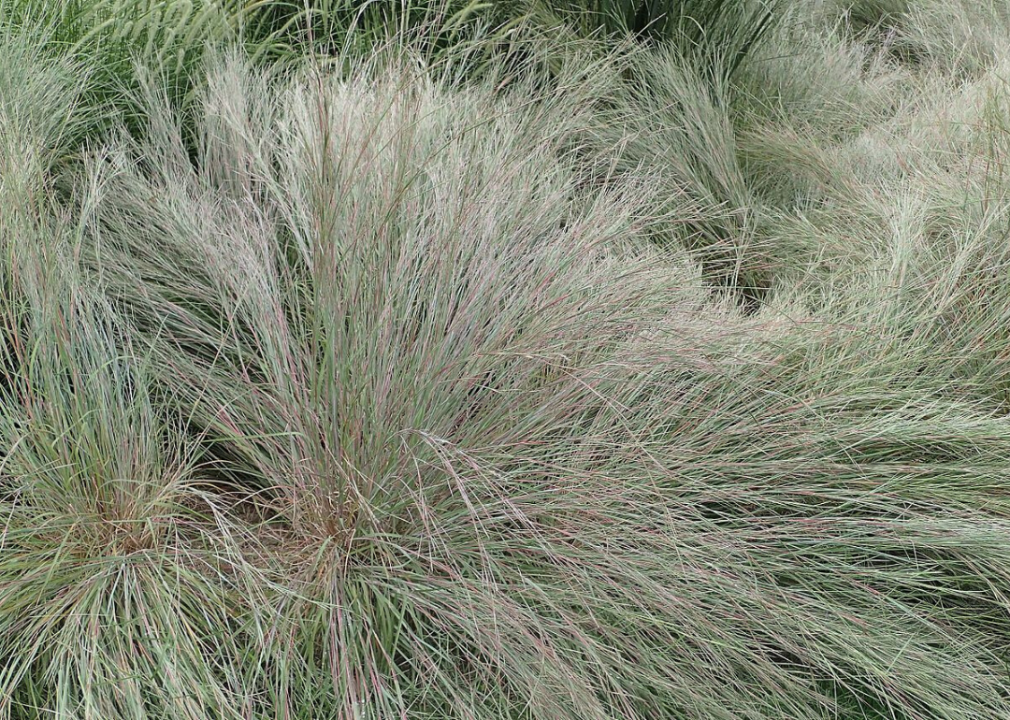
Krzysztof Ziarnek, Kenraiz // Wikimedia Commons
Little bluestem
- Scientific name: Schizachyrium scoparium
- Bloom period: August to February
The little bluestem’s native range is broad, encompassing “prairies, fields, clearings, hills, limestone glades, roadsides, waste areas, and open woods A striking orange colour marks its dominating presence in the fall and equally noticeable purple flowers in late summer.
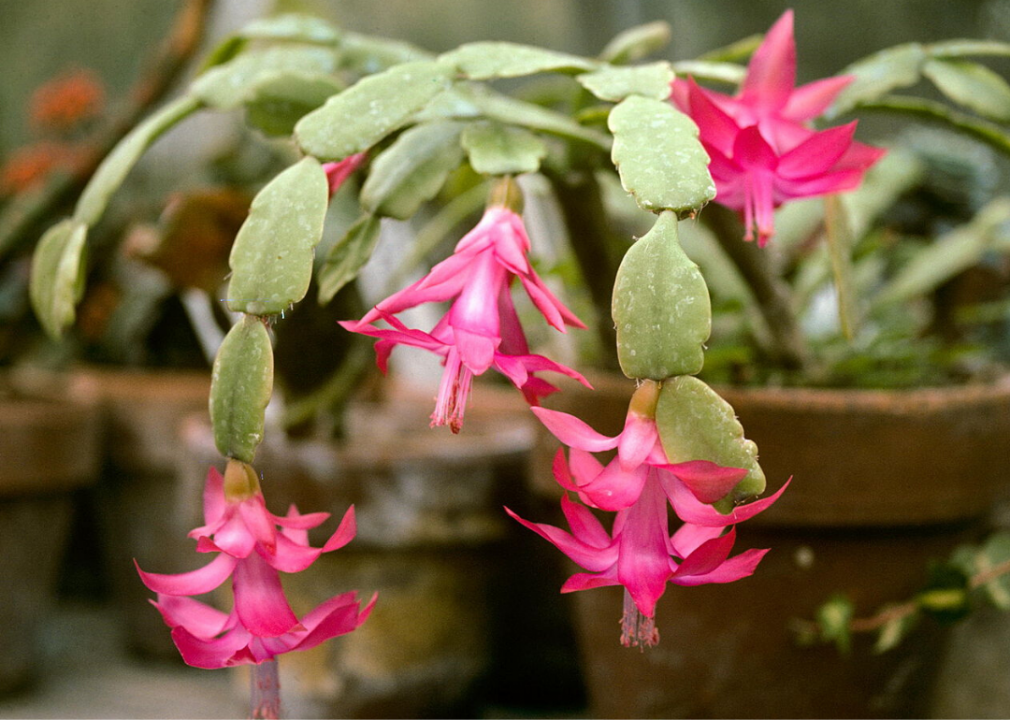
WayneRay // Wikimedia Commons
Christmas cactus
- Scientific name: Schlumbergera × buckleyi
- Bloom period: Seasonal bloomer
This festive species is a holiday fixture. It's , and its red and pink flowers bloom around Christmas. In warmer areas, it can be grown outside throughout the year.
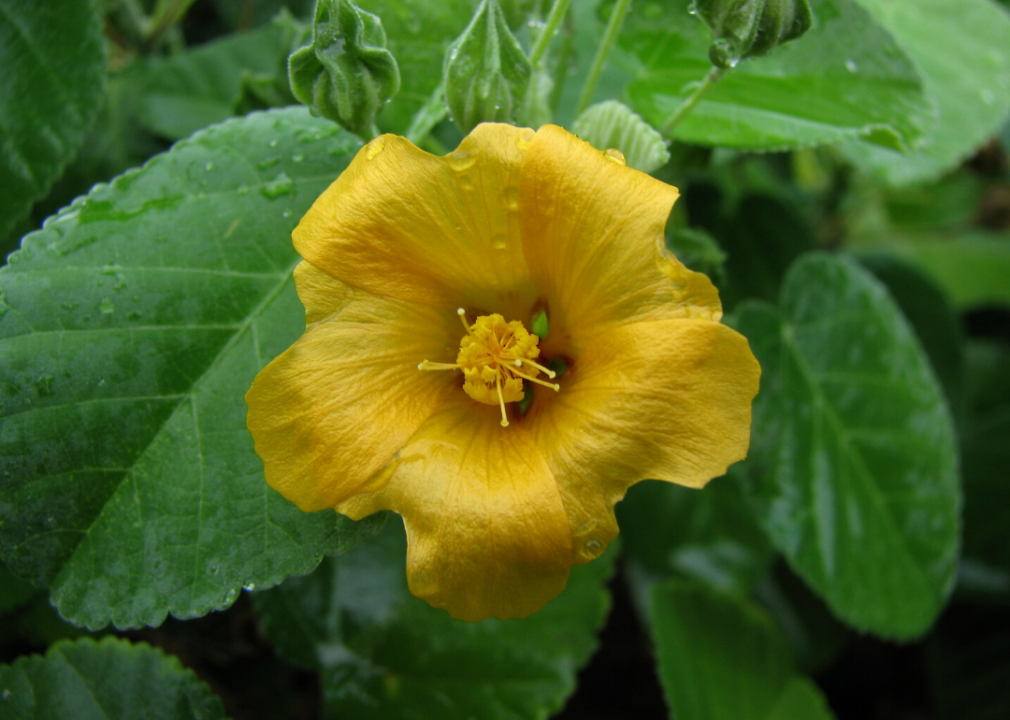
David Eickhoff // Flickr
Ilima
- Scientific name: Sida fallax
- Bloom period: Seasonal bloomer
This colourful ilima flower blooms in sandy coasts, reefs, lava fields, and pastures year-round. Its yellow, orange, or red flowers are used to make leis in Hawaii, where .
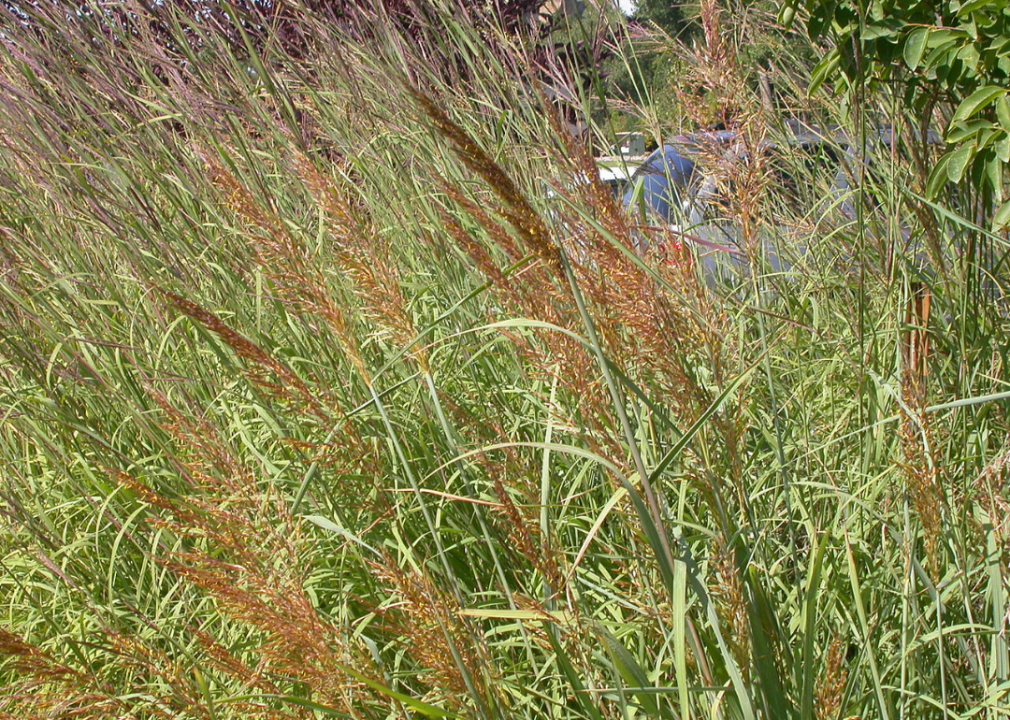
Matt Lavin // Wikimedia Commons
Wood grass
- Scientific name: Sorghastrum nutans
- Bloom period: September to February
Otherwise known as Indian grass, wood grass can appear in a variety of forms, blooming yellow in the summer, turning yellowy-brown in the fall, and fading to gray throughout the winter. It occurs in prairies and open forests throughout Missouri, where it .
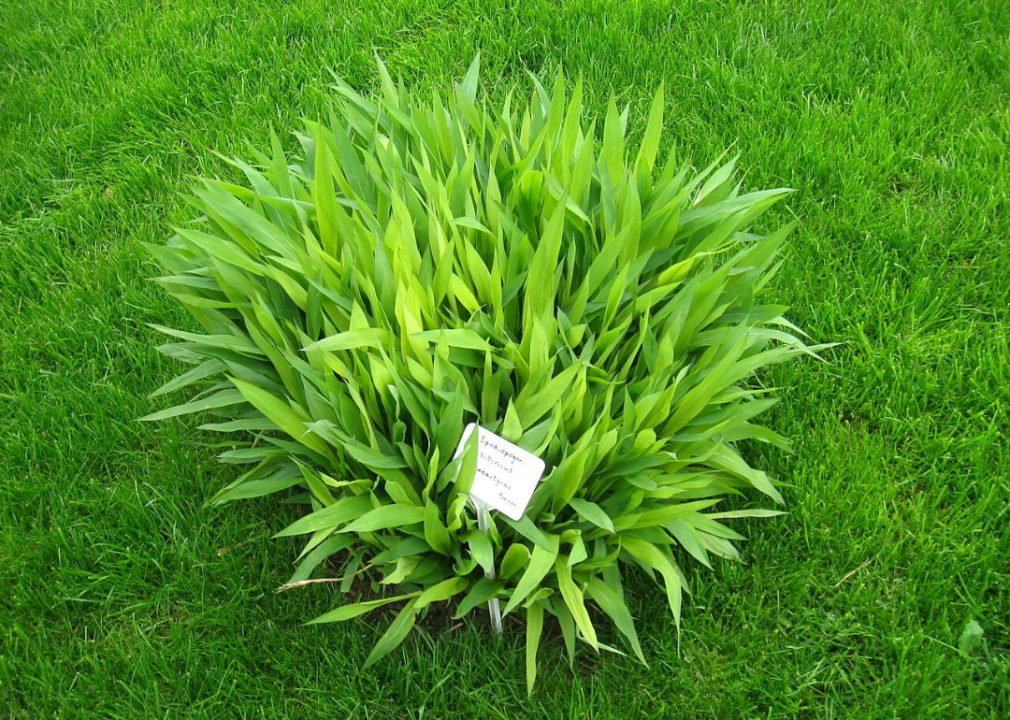
Daderot // Wikimedia Commons
Frost grass
- Scientific name: Spodiopogon sibiricus
- Bloom period: July to February
This plant thrives in the temperate climate across Southeast Asia. Frost grass displays a with unique purple tints in various shades. It is often planted in gardens to create “bold architectural patterns.”
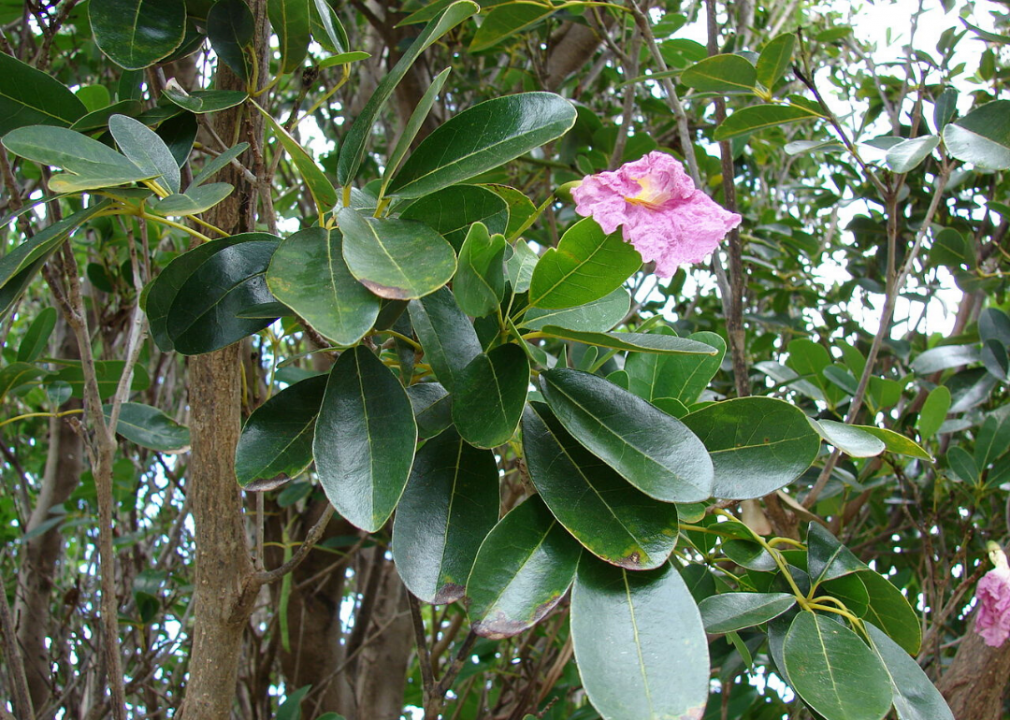
Forest & Kim Starr // Wikimedia Commmons
Tabebuia
- Scientific name: Tabebuia rosea
- Bloom period: Seasonal bloomer
The national tree of El Salvador can also be found in places between Mexico and Venezuela. It in Central America's timber markets.
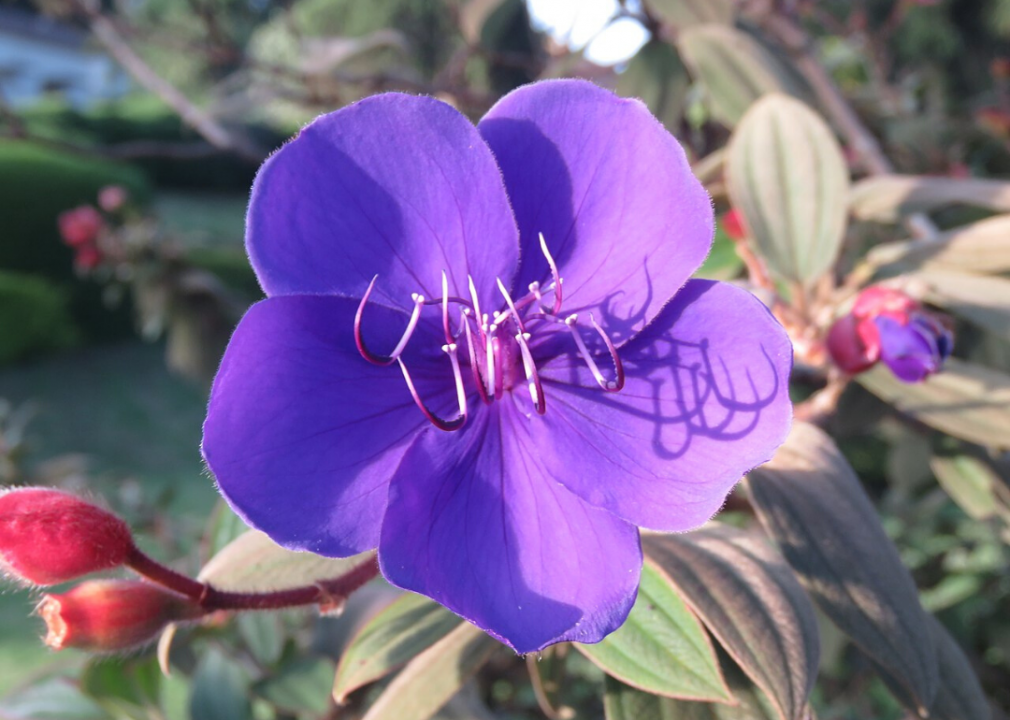
Vinayaraj // Wikimedia Commons
Princess flower
- Scientific name: Tibouchina urvilleana
- Bloom period: May to January
The princess flower, which originates in the rainforests of Brazil, thrives in the warm climates of southern Florida and California. The princess flower has also spread to Hawaii, where it has naturalized and is now .

Tauʻolunga // Wikimedia Commons
Boat lily
- Scientific name: Tradescantia spathacea
- Bloom period: Seasonal bloomer
The boat lily also goes by the monikers "oyster plant" and "Moses-in-a-basket." Native to Central America, its colourful appearance makes it a popular addition to many gardens in tropical areas, particularly those of the West Indies. The plant has also spread to Louisiana and Florida, where it is .
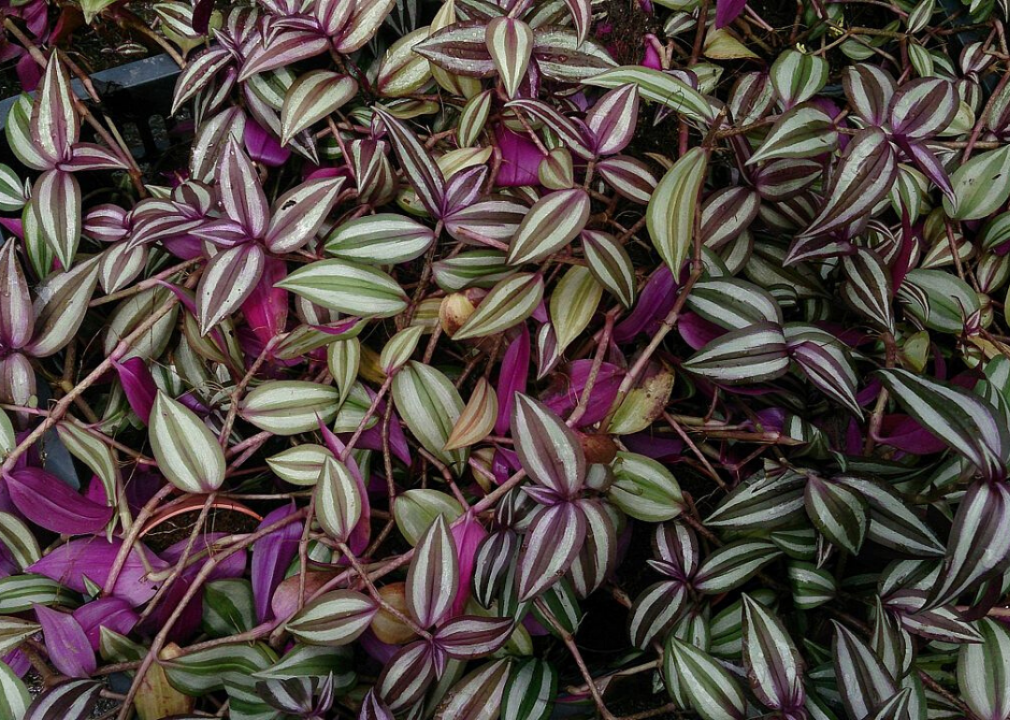
Mokkie
Inch plant
- Scientific name: Tradescantia zebrina
- Bloom period: Seasonal bloomer
As a trailing plant, the inch plant is and in hanging baskets indoors where it is not. It is native to Mexico, Belize, Guatemala, and Honduras.
